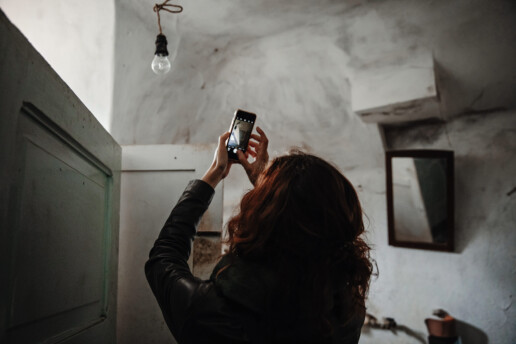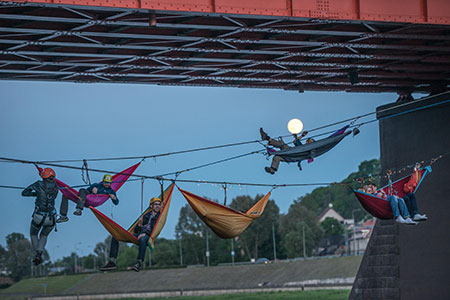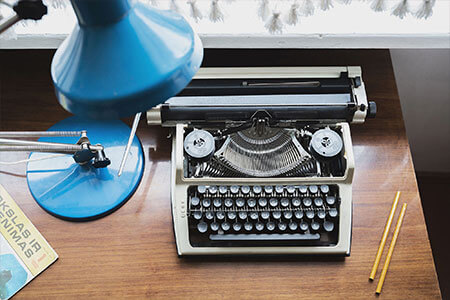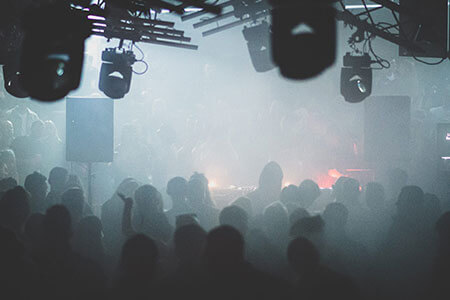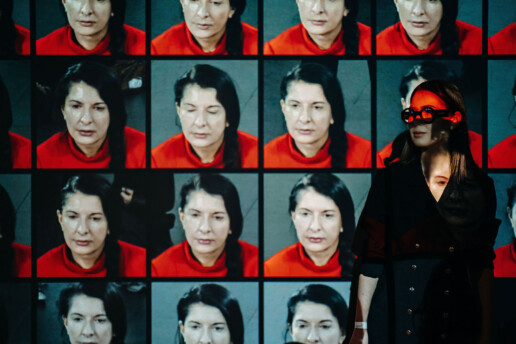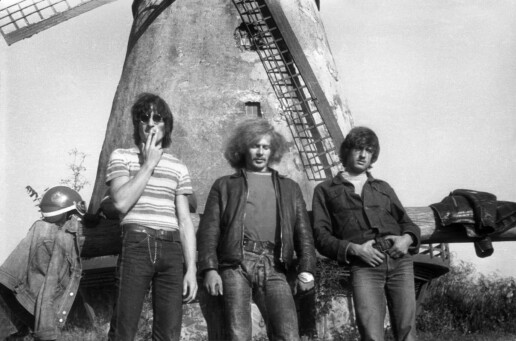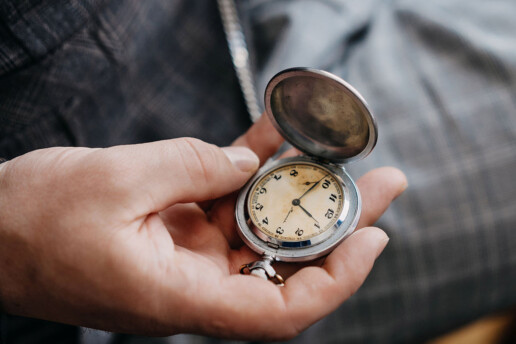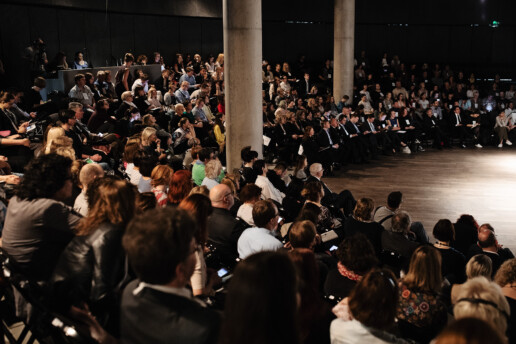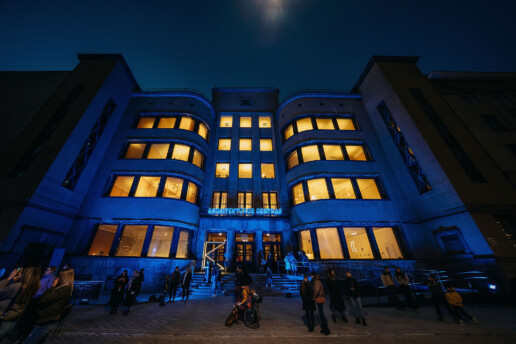Grande Saison SanuaK: See Kaunas through the eyes of others
Kaunas and Berlin are joining forces to give Kaunas residents and guests a special experience. International artists from B_Tour (Berlin) and local tour guides from Ekskursas (Kaunas) have united their expertise and created a programme of three guided tours titled Grande Saison SanuaK. As part of Kaunas European Capital of Culture 2022, on Sundays of May (1st, 8th, and 15th), the tours will challenge the visitors’ perspective on their surroundings with creativity and humour. From exploring puddles or cracks in the asphalt to getting to know some local senior women, the organizers of the programme promise to surprise, make laugh, and help to see the city in a new light.
Grande Saison SanuaK refers to the Grande Saison Dada spring series of tours organised by the Dada group in 1921, Paris. Inspired by this happening, the excursions in Kaunas will combine auditory, visual, performative, narrative, and somatic artistic strategies to challenge the social structure of the guided tour playfully.
According to Yael Sherill, the artistic director of B_Tour, conventional guided tours are mostly focused on the sites. In contrast, artistic tours offer a unique experience created by artists: “During the three tours, the “site” might be a commonplace courtyard facing a “normal” residential building, a crack in the asphalt or a private student apartment.”
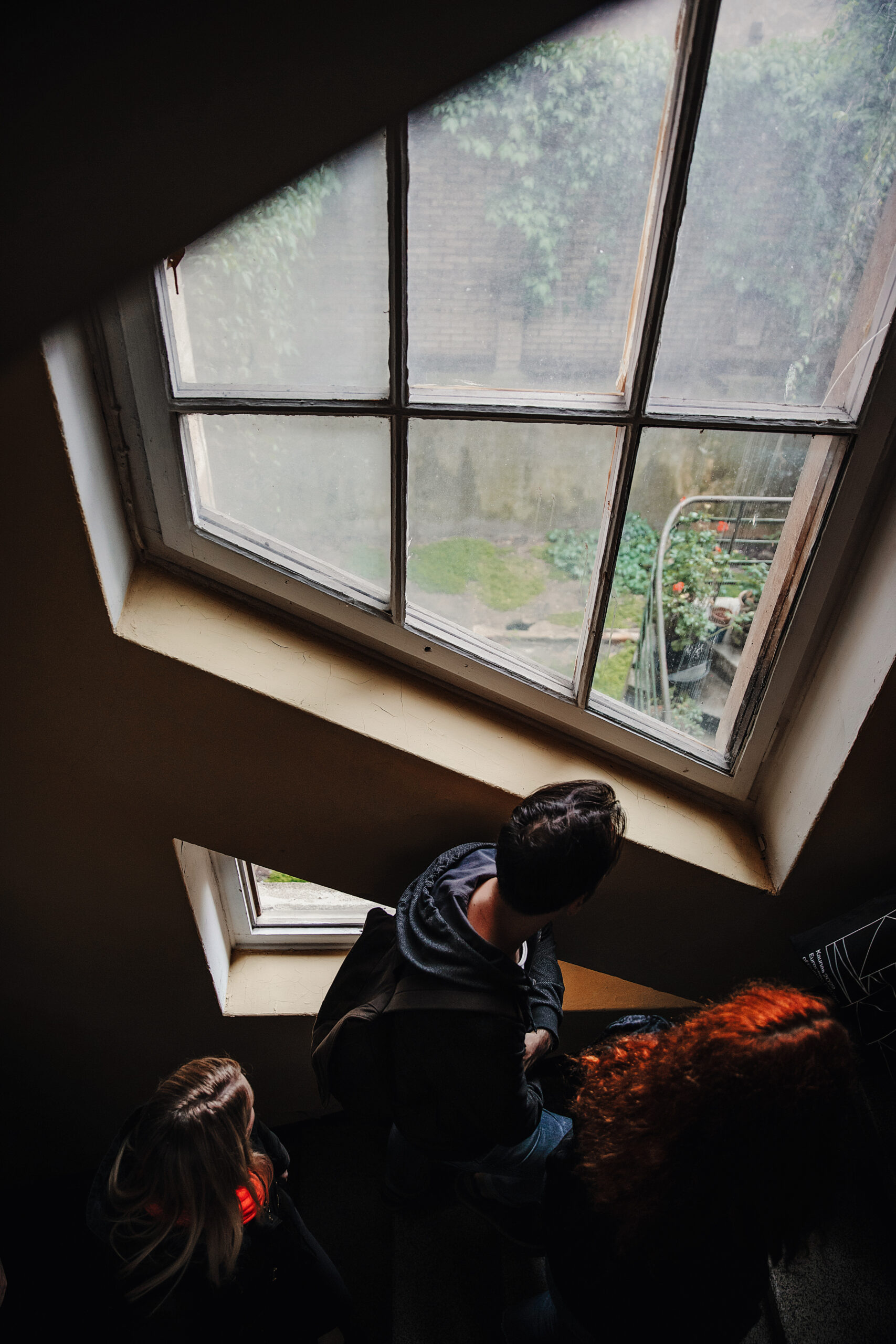
Her colleague Lianne Mol adds that these “sites” become part of a larger narrative told by the artists about intergenerational trauma, post-war architecture, and utopian philosophy.
„The tours apply various strategies; performativity, visual storytelling, intimate conversations, awkward silences, phone calls… You will have to come and see!“ invites Sherill.
The excursions will take place in the city centre and Šančiai district. The visitors will be invited for a one-to-one conversation in a secret location with “Mamos Mama Mena”, local senior women who will tell their personal stories about Kaunas under Russian influence. Co-walkers will discover the wishes and needs, shyness, and anxiety of puddles in the Šančiai district on the tour Puddle Watching. And on the tour Die Wohnung (The Dwelling), the audience will visit the first Bauhaus settlement worldwide in Stuttgart, Germany, without ever boarding a plane.
Kaunas is open to new experiences
Dada’s series of happenings and manifestations in the public space in 1921 included an excursion to the St. Julien-le-Pauvre church. The independent curators from Berlin note that this site-seeing trip was promoted in flyers and newspapers as an alternative guided tour that would correct the incompetence of regular tour guides and visit places with “no reason to exist”.
In line with the Dadaist approach, the excursion consisted of a series of events, like the guide Georges Ribemont-Dessaignes reading the definitions of random words from the dictionary in several places and the performative presentation of a manifesto by André Breton.
As Breton would recall in his text “Artificial Hells”, this excursion intended to lay bare and break down the social structure of the guided tour and tourism itself. The surrealist writer Georges Hungnet described the events as an “absurd Rendez-Vous, mimicking instructive walks”.
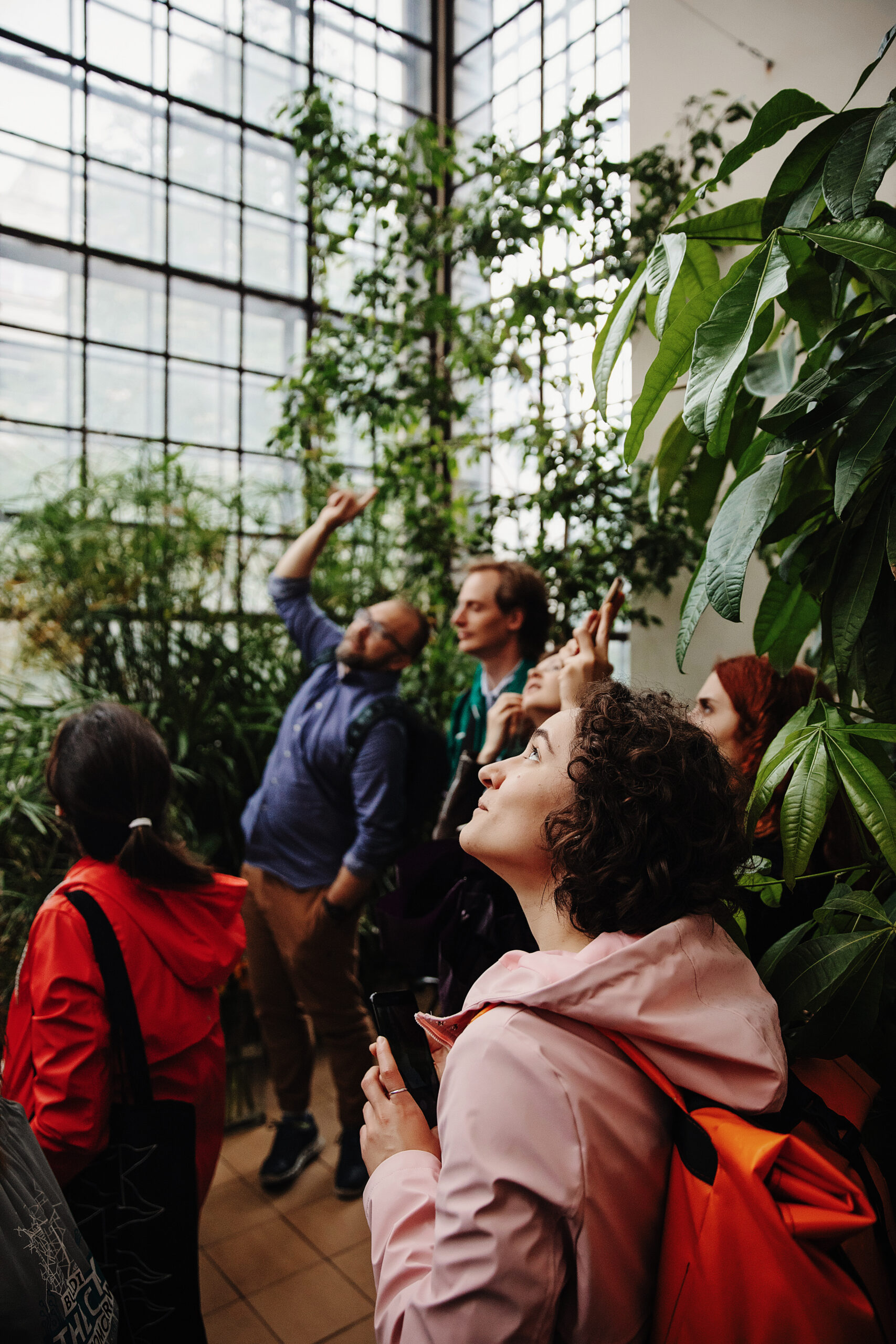
“101 years later, both of our organisations find the Dadaist tour incredibly contemporary, creative, and full of humour, and we decided to experiment with our own Grande Saison,” says Sherill.
According to Algimantas Grigas, coordinator at Ekskursas, Kaunas is a perfect place to experiment and fuse artistic knowledge into new products: “New guided tours that move the boundaries of what a guided tour is in Lithuania.”
He explains that Kaunas was the birthplace of Jurgis (George) Mačiūnas, one of the founders and active proclaimers of Fluxus art. The aftermath of the World Wars directly influenced both Fluxus and Dada. While Dada rejected the fact that art has to be beautiful, Fluxus not only put forward ideas that everyone can be an artist but also employed certain Neo-Dadaist tendencies like the opposition to sensory aesthetics.
It is important to rediscover old places
The tours not only explore the city’s secret places. They also reflect on the production and distribution of knowledge.
„Decolonising sacred cows of the modernist narrative, the tours rewrite hegemonic stories. They employ embodied knowledge, perspective-shifting, and humour to challenge dominant stances in a subtle, thought-provoking, and creative way,“ says Mol.
She notes that tourism is a great privilege these days – discovering different ways of living and thinking is a gift. However, because of globalisation, tourism is no longer about finding the differences – it is about reproducing what is the same and easily consumable.
“The tours we show aim to do precisely the opposite. Not every person will love all the tours, but we hope you will find at least one that is eye-opening and enjoyable!“ smiles Sherill.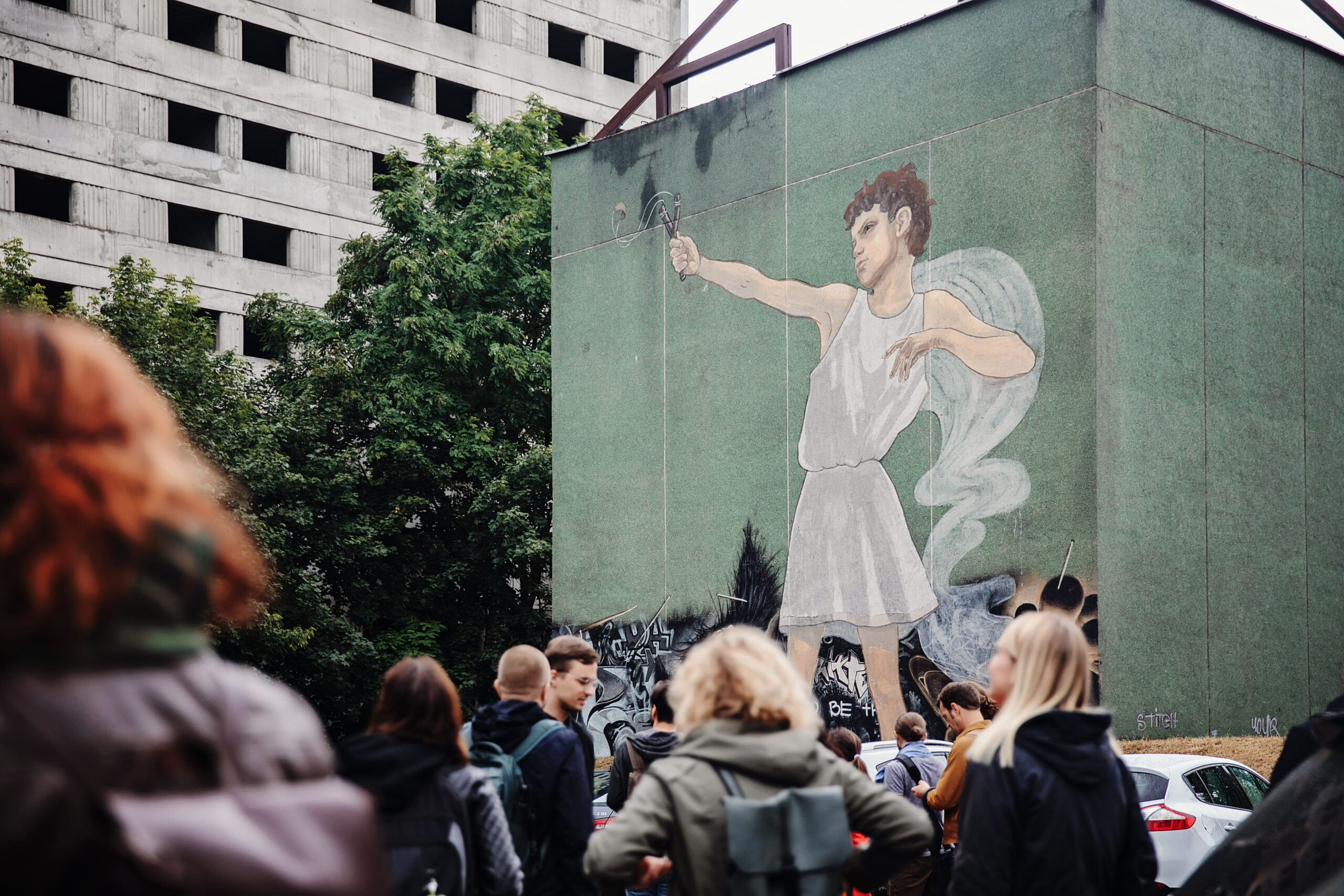
She adds another reason for it – climate change. People in the global north should take responsibility for their actions, like every-weekend trips by airplane: “Flights account for a huge amount of the global carbon dioxide production, so there is a great potential in rediscovering one’s city in completely new and unexpected ways.”
Photo author Martynas Plepys
A Birthday Like no Other - all the Cultural Rivers of Kaunas Will Reach “The Confluence” on 20-22 May
The Lithuanian Kaunas, born from the love of the Nemunas and the Neris rivers, will celebrate its birthday in a unique way this year - the European Capital of Culture will be hosting “The Confluence” weekend on 20-22 May, the second part of the Contemporary Kaunas Myth trilogy.
This time, the city will address its inhabitants in the language of water, inviting them to search for intersections, convergence, connection, and most importantly - connection with themselves and others. “The Confluence” invites everyone to immerse themselves in three days full of unexpected experiences, video and audio journeys, and meetings with culture and art.
“If only the climate conditions allowed, we would hold all the events of the Kaunas Myth trilogy by the river - after all, for so many years, Kaunas has ignored the fact that it is a city by the water. “The Confluence” weekend means hundreds of opportunities to enjoy the relationship with the river and its endless possibilities, both in terms of culture and art, and in terms of meaningful leisure and lifestyle in general,” Virginija Vitkienė, the head of Kaunas 2022, believes.
The culmination of the weekend will, of course, take place at the confluence of the Nemunas and Neris rivers. The second part of the Kaunas Myth trilogy will be a mystery show on the water on the evening of 21 May, featuring rock and pop stars and a symphony orchestra. More about the highlights of the big Kaunas 2022 weekend will follow soon. For now, it is clear that a date with the Kaunas Beast is planned for after the big show - this time, it will take place at Žalgiris Arena.
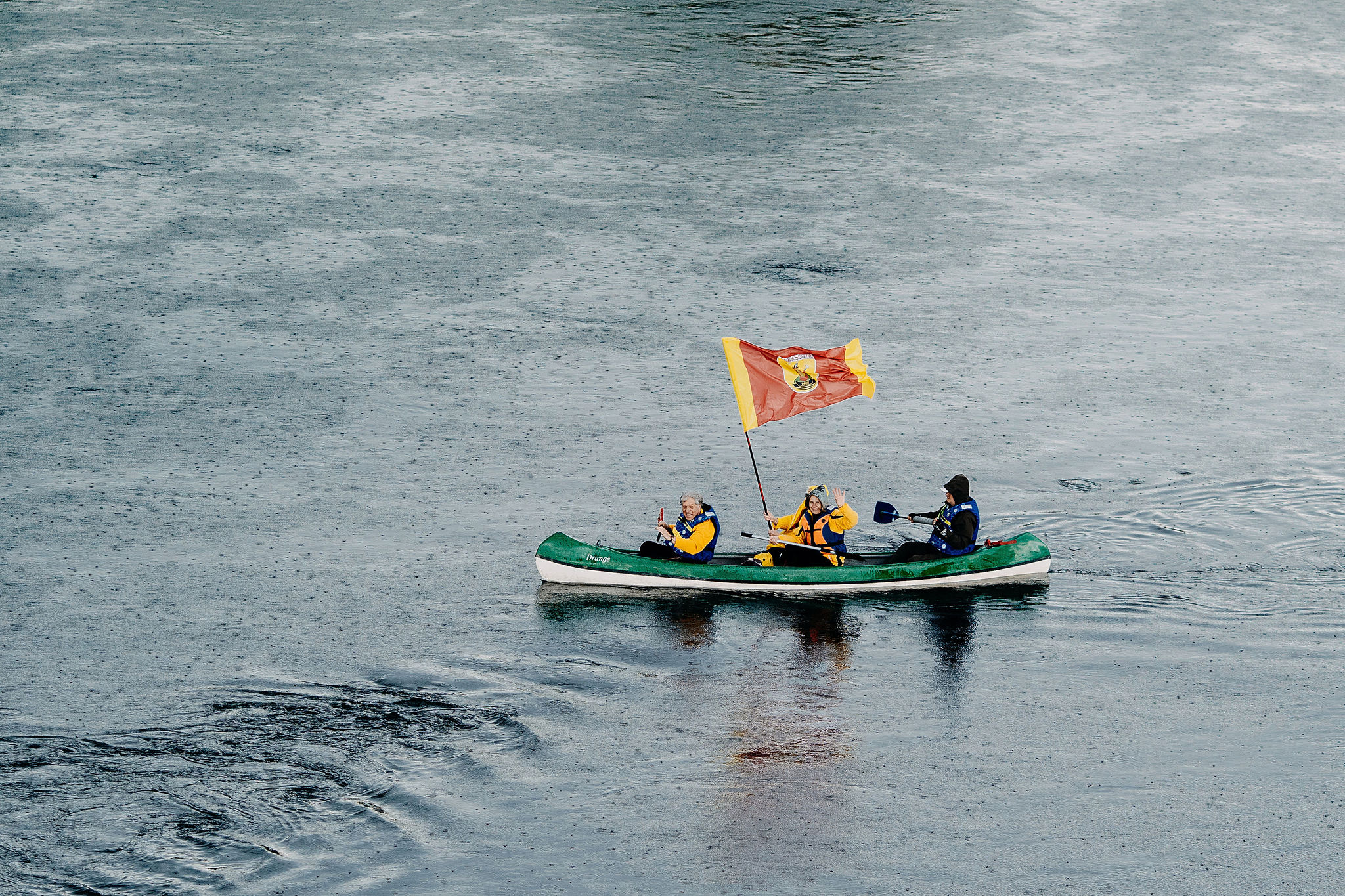
From Laisvės Alėja to Zapyškis
Symbolically - at the dinner table - the big weekend will be kicked off with the Courtyard Festival on 20 May. An inseparable spring tradition, which has come to Kaunas on the occasion of the International Neighbours Day, will call for tablecloths to be laid and feasts to be piled up on Laisvės Avenue, the region’s longest pedestrian boulevard. This year, the festival will feature not only one long table of Kaunas city and Kaunas district residents, communities and organisations, stretching across Laisvės Alėja but also Kaunas’ new friends, the Ukrainians. Of course, there will be many cultural highlights, culminating in a performance by the Kaunas City Symphony Orchestra by the Soboras church.
On Friday, the opening event of Nemuno7 will take place in the inter-war Kaunas Waters Reservoir - it will be an audiovisual performance of the Tykumos project, featuring sounds from the most unexpected places. And the season’s wettest news, the Nemuno7 culture boat, will dock in Zapyškis, on the Nemunas, on 22 May. On that day, the traditional kite festival “Between the Earth and the Sky” will occur there.
Action in the Water, in the air and in Labyrinths
Spectators and visitors will be amazed by performances by acrobats, contemporary circus, action in the rivers, and musical picnics on their banks throughout the weekend. During “The Confluence”, everyone will be invited to participate in the community initiative “Let’s Celebrate the River”. It will offer two cultural routes along the Nemunas and the Neris, which will converge at the confluence. Canoeists and rafters (who can make their rafts in a special workshop before the event) will be able to visit the cultural islands - a plein-air painting workshop, a sports and games station, live music and more.
“Getting lost will be fun”, promises the Catalan company “Espectacle Spectacular”. This collective of artists will set up a 700 square metre installation - three different labyrinths - by the Kaunas Castle. Little Kaunas residents can already mark their parents’ calendars in red - there will be various educational activities, workshops and other entertainment. Of course, there will also be other performances - Kaunas State Puppet Theatre and its festival Kaunas Puppet 2022 will present two cosmically exciting shows at the castle.

Happy Birthday, Kaunas
Although Kaunas is mentioned in historical sources as early as 1361, the city’s birthday is traditionally celebrated on 20 May or the weekend closest to it. On this day in 1463, the city’s rights were considerably extended. So in 2022, the year of the European Capital of Culture, Kaunas, turns 559.
“The Confluence” weekend programme will be packed with highlights to mark the occasion. One of them will be the European Culture Fair, where traditional crafts, feasts and contemporary accents will all find their place. Lithuanian and European folk craftsmen, artists and culinary artists will be waiting for you at the Kaunas Castle.
Music is a must for a birthday. On 20 May, the Kaunas 2022 stage in the Town Hall Square will be officially opened. The best and most original performers from our country and Europe (even the world!), performances, literature, other stage acts and announcements - everything will fit here until September. The opening weekend will be filled with pop, electronica, rock, and world music festive rhythms. An even bigger stage, specially dedicated to Kaunas’ birthday, will be erected in Santaka Park.
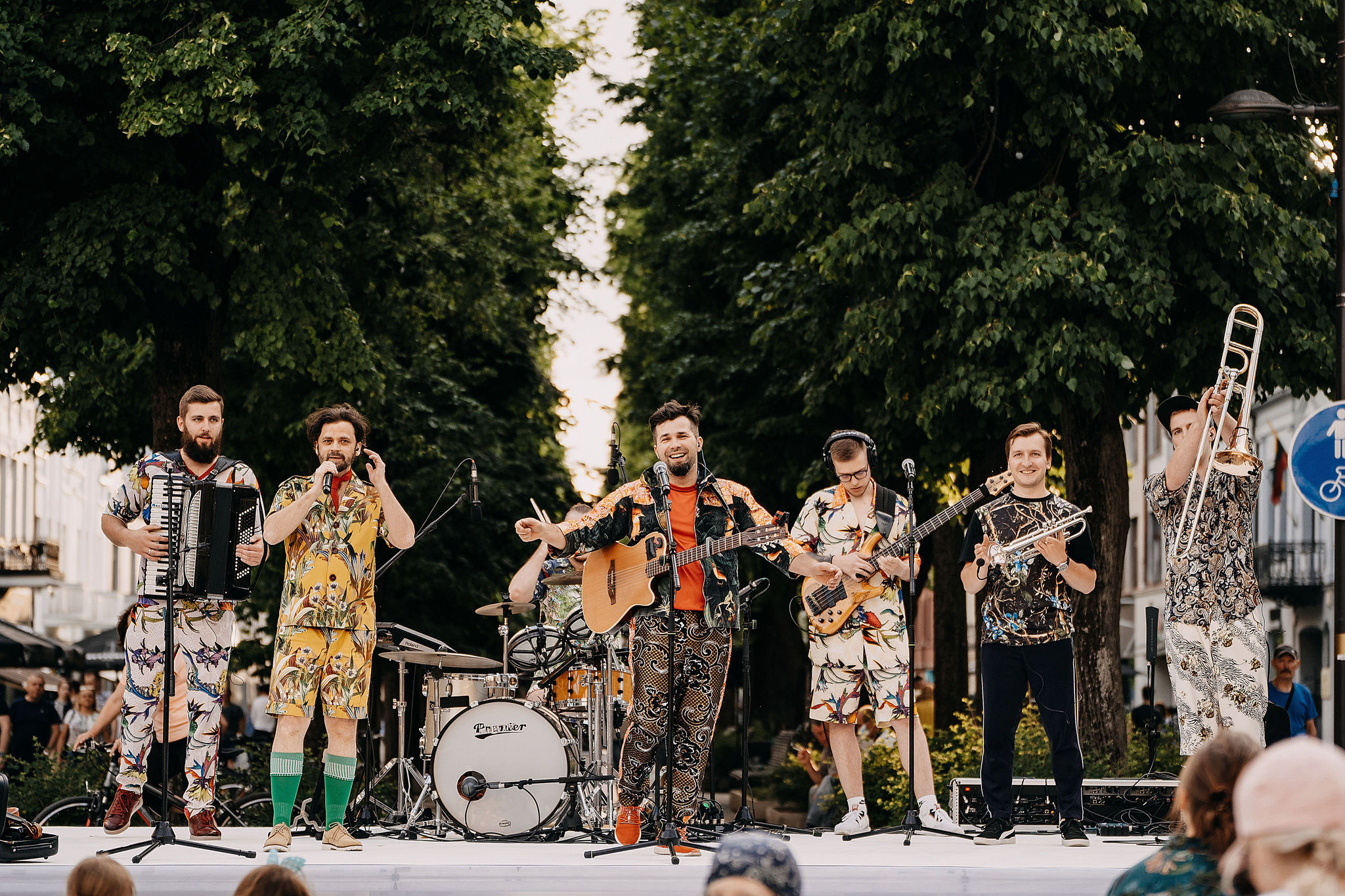
In total, Kaunas 2022 and its partners will present around 60 different activities, including approximately 20 concerts, in “The Confluence” weekend programme.
Of course, 20-22 May is also a great time to visit those European Capital of Culture exhibitions already running. Contemporary art and culture lovers must visit the Bank of Lithuania with Yoko Ono’s installation “Ex It”, the new show “1972: Breaking through the Wall” at Kaunas Central Post Office, and the retrospectives of William Kentridge and Marina Abramović at the National Museum of Art of M.K.Čiurlionis and the Kaunas Picture Gallery.
For an event of this magnitude to run smoothly, organizers are planning to gather a team of 400 volunteers. Those who would like to become part of the event, can register here.
The complete programme of the Kaunas 2022 myth trilogy weekend “The Confluence” will be published on kaunas2022.eu and on the Kaunas 2022 mobile app in the run-up to 20-22 May.
Photo author Martynas Plepys
From Culture Rides to Interwar Apartments: Authentic Experience Awaits in Kaunas, the European Capital of Culture
Liberty Avenue, M. K. Čiurlionis National Museum, and the Old Town – wondering what else to see in Kaunas? The organizers of “Kaunas 2022” invite those who have already visited the most important spots, exhibitions, and events to peek through the keyhole and see the city in a new light. Discover the most delicious coffee, uncover the legends lurking in the city and see how apartments in Kaunas looked like between the wars. Experiential accommodation, meetings with locals and unprecedented history of the city – all this and much more – in the impressive hospitality programme “Experience Kaunas”.
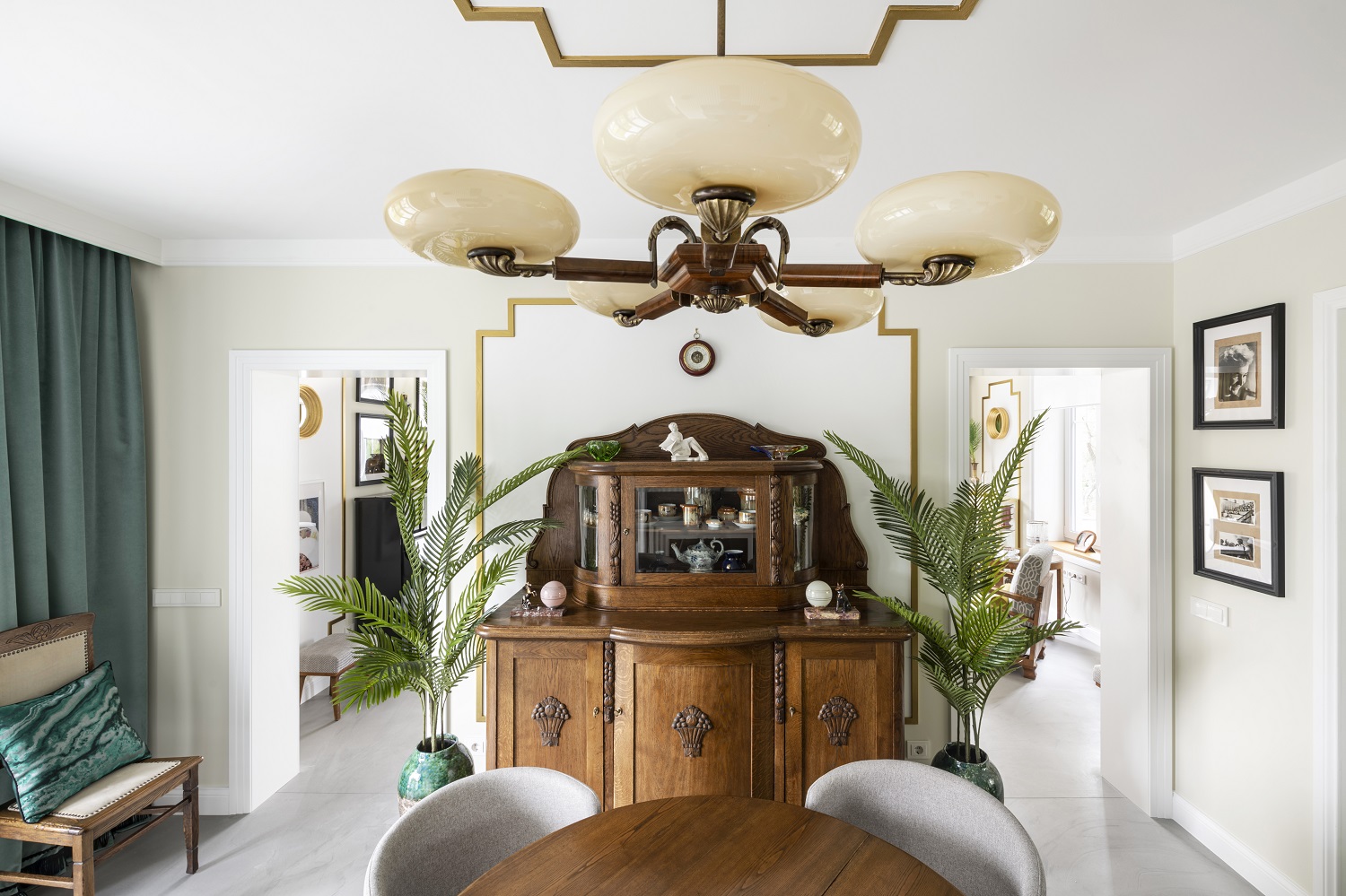
The unique programme offers to get to know the city through authentic experiences: morning in a historical apartment, a non-traditional tour led by a local and a trip carried out by a driver who can give some useful bits of advice. “We want our visitors to feel the beauty of Kaunas and to find the city’s hidden gems in numerous streets or districts, known only by locals. This is a great opportunity to look at the city through a magnifying glass”- promise the curators of the programme.
To wake up in historical apartments: corded telephone, vintage dishes, and a panoramic view of Kaunas
Records of interwar music slowly rotating in a gramophone, rooms drowning in Art Deco perfume and a cup of coffee, enjoyed while looking at the panoramic views of Kaunas… “I hoped that it would be good, but I didn’t expect it to be so extraordinary”, tell those who tried accommodation in tailor-made “Experience Kaunas” apartments.

This experiential stay will stand out from the usual overnight stays in modern hotels. Carefully thought-out interior details, such as corded telephones, books of the era or authentic furniture will help to touch, see, and smell the atmosphere of the specific period. Visitors can choose from several places to stay: a modernist villa designed by an interwar architect, a 70's-style apartment in Žaliakalnis or an interwar-style villa in Panemunė district.
Choose the desired room and start the time travelling – the authentic apartments will bring you to different historical periods of the city.
Go where the locals go
“Experience Kaunas” also offers services of Culture Hosts – locals, determined to show their hometown. All of them went through special training and chose the topics which they would like to share with the visitors. More than 200 people from Lithuania and abroad have already enjoyed the special tours. If you have already seen the main tourist attractions of the city, it is time to descend into unexplored urban areas. Culture Hosts are ready to talk about street art, reveal the secrets of various districts and even explore some tunnels and dungeons. Through the eyes of those who know the city inside out, Kaunas will reveal its lesser-known side, while you will get some useful tips for the evening activities.
“Probably the most fun part is to see how surprised people get when they hear previously unknown facts. I also enjoy socializing and sharing knowledge and my passions. Kaunas is my hometown, so I can talk about it from the perspective of a local,” says Povilas, who invites visitors to wander around the Kaunas Castle and see the city's churches up close. The Culture Host, who is studying history says that the hospitality programme is used by both Kaunas residents and people from other Lithuanian cities or abroad. For example, a group from an Estonian school will come to explore the city with Povilas in the upcoming days. The young man says that the friendships do not end immediately after the tour: “With one of my guests we talked about Kaunas Žalgiris team, with the others – shared some tips of travelling. These tours are a kind of exchange, which makes us grow and learn something new.”
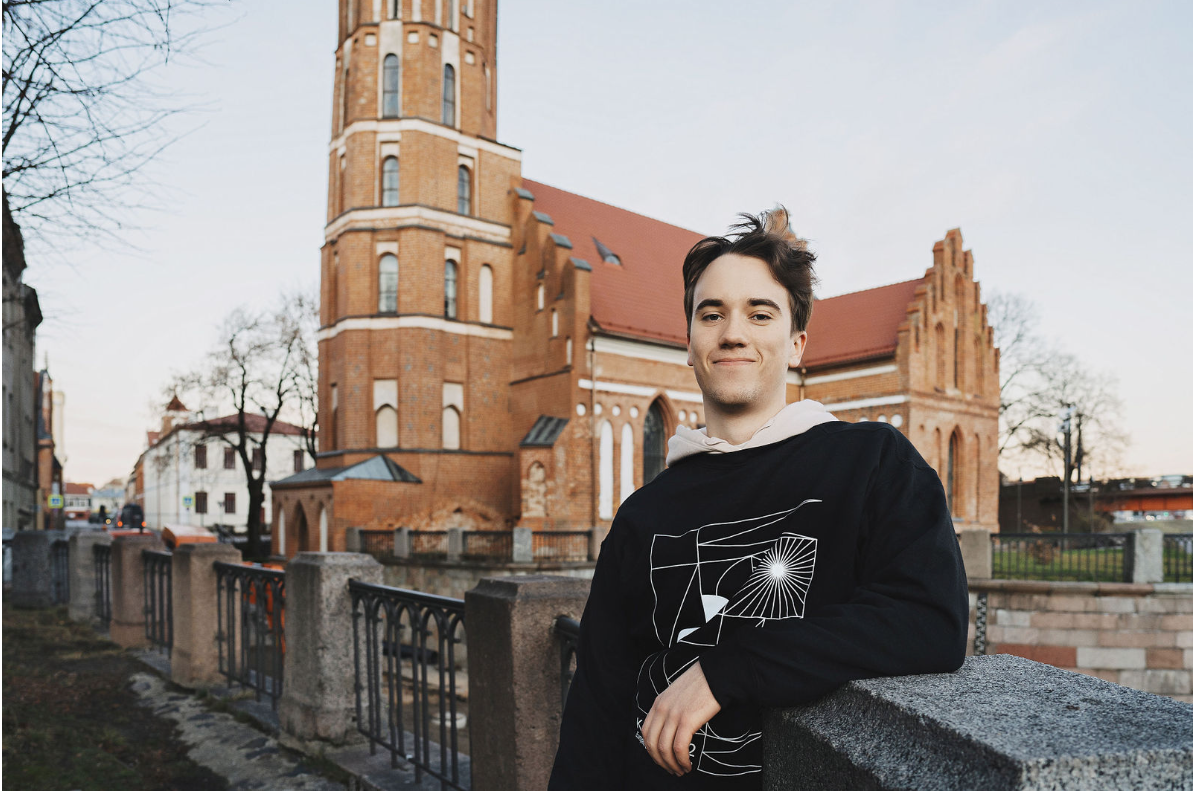
Travelling around accompanied by a real connoisseur of Kaunas culture
“Experience Kaunas” also thought about guests who have less time, but no less desire to familiarize themselves with the city. The organizers of “Kaunas 2022” offer everyone willing to see places unreachable by foot to try a private tour by car together with a gourmet of Kaunas culture. From culture enthusiasts and artists to photographers – local drivers with different backgrounds are ready to share important advice and stories.

“Kaunas 2022” events continue, and the upcoming summer will bring more concerts, exhibitions, and performances than ever before. Thus, the hospitality programme is becoming more and more relevant.
“The beauty of Kaunas reveals not only in the most famous tourist attractions or buildings. It is often necessary to look for cultural gems in lesser-known details. We thought it is best to get to know the city through the experiences of locals. They can talk not only about the architecture of Kaunas but also about the life of Kaunas residents. Thanks to these people, the real, original, and authentic spirit of the city will open to our guests”, – tells Marija Pulokaitė, the Curator of the Hospitality Programme.
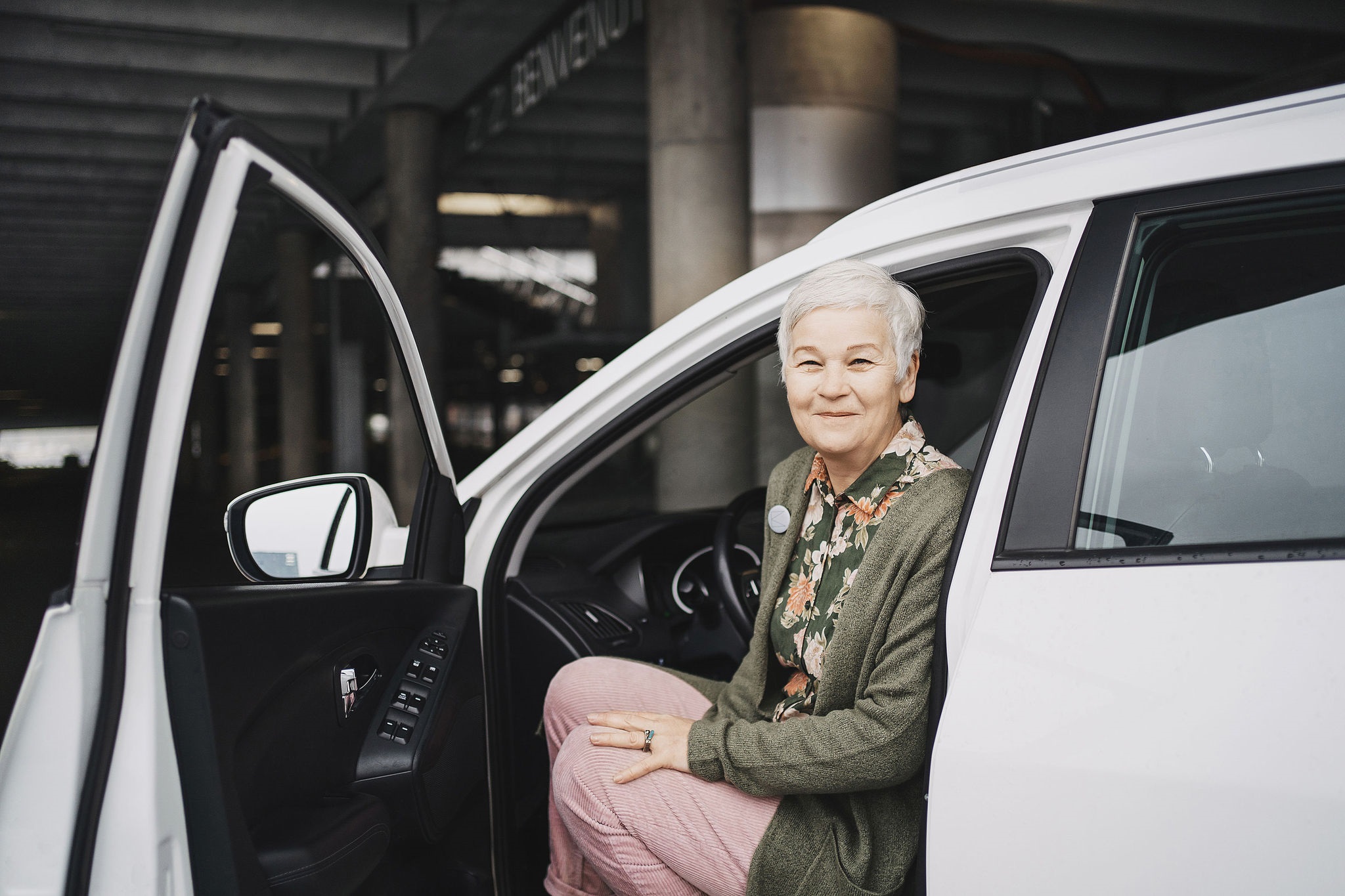
Audra festival updates: Midori Takada, Kittin, HÖR Radio, Caterina Barbieri and many more to come to Kaunas
From June 29 to July 3, Kaunas, Lithuania will be hit by the Audra Festival, a five-day urban music and art festival. The nightclub Lizdas, together with the youth of Kaunas city and district and the Kaunas European Capital of Culture 2022 team, is organizing a huge program of events and musical performances scattered all over the city.
The growing roster of performers has been announced. HÖR Radio, Berlin's iconic cultural institution, will come to Kaunas for a temporary residency and a special broadcast. They will be joined by the legendary French duo Kittin and The Hacker, Esa Afro-Synth Band, PartiBoi69, Caterina Barbieri.
But one of the festival's most important guests is Japanese percussionist and composer Midori Takada, considered one of the world's pioneers of ambient and minimal music. The premiere of "Silence Birds", a collaborative project between her and several ensembles, will take place in the Grand Hall of the VDU, inspired by the Russian aggression in Ukraine. Midori Takada has already visited Lithuania three decades ago, just after regaining the state's independence.
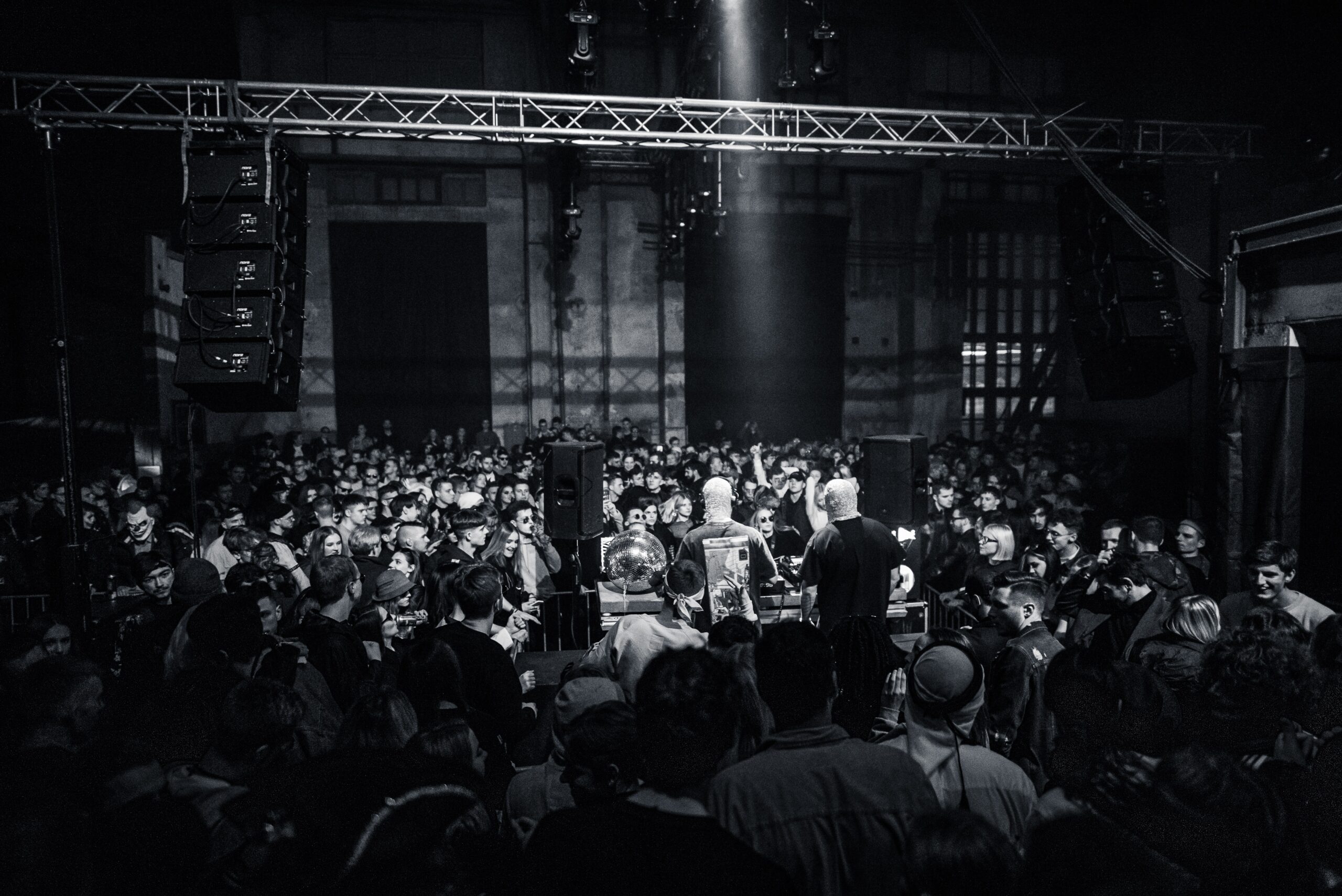
The following list of artists have already confirmed their participation in the festival: Azu Tiwaline, Call Super, Deena Abdelwahed, DJ Marcelle, Helena Hauff, Hilda, Job Jobse, Mor Elian, Pakas, Noia, Patricia Kokett, Roads, Eimantas, Vox Low , V, 5zyl, Mantas T, Bradley Zero, Lover, Planet Polar, Between Two Dawns, Violet, Gabrielle Kwarteng, Alex Krell, Arp Frique, Antal, Aurora Halal, DJ Rituals, Héctor Oaks, Black, LSDXOXO, Julia Huxtable, Loran Vaitkus, Maria Paskevic, Mario Moretti, Elboe, Mamiko Motto, Monika Seta, Aiste Regina, Manfredas, Identified Patient, Under Black Helmet, VTSS, Free Finga, Flash Voyage, CCL, Eris Drew, Less Feeling, Vaiper Vitalijus.
In addition to the music program, there is also news in the cultural program. The organizers announce that the festival days will include open-air screenings of audio-documentaries curated by "Inconvenient Cinema", night readings, the exhibition "NFThon: Future", comedy performances in the event "Standup 2.0", night painting classes and various interdisciplinary performances.

The program of the Audra Contemporary City Festival will be updated. It is jointly developed by the youth organization "Kylantis Kaunas", team of the nightclub Lizdas, Kaunas - European Capital of Culture 2022 and various partners from Greece, Serbia, France, Germany, Estonia, Finland and Japan.
Photo author Vytenis Silver
Cultural trips: calendar of events for April
This month, going wherever your feet take you in Kaunas, you can unwittingly travel around the world. April travel directions: Šilainiai – Japan (and back). Culture will be visiting courtyards, neighbourhoods, shop windows and cinema halls. And one space deserves particular support – the CulturEUkraine Centre, a place for Ukranians, who have fled war, to create and spend time together. But there is always something for everyone to make the most of their time in Kaunas: for theatre lovers and jazz enthusiasts, culture’s senior participants and the Mythical Beast’s youngest fans.
The schedule of cultural trips in April is ready :
Marina Abramović's exhibition “Memory of Being”
One of the most anticipated art events in Kaunas and all of Lithuania is the exhibition “Memory of Being” by Marina Abramović, one of the most famous performance artists in the world, which is to be presented for the first time. The exhibition offers a detailed presentation of the works by Abramović from the 1960s to recent years; the exhibition also draws attention in a unique form – for the first time it is prepared as an impressive video installation from selected documentaries and films of the artist’s performances.
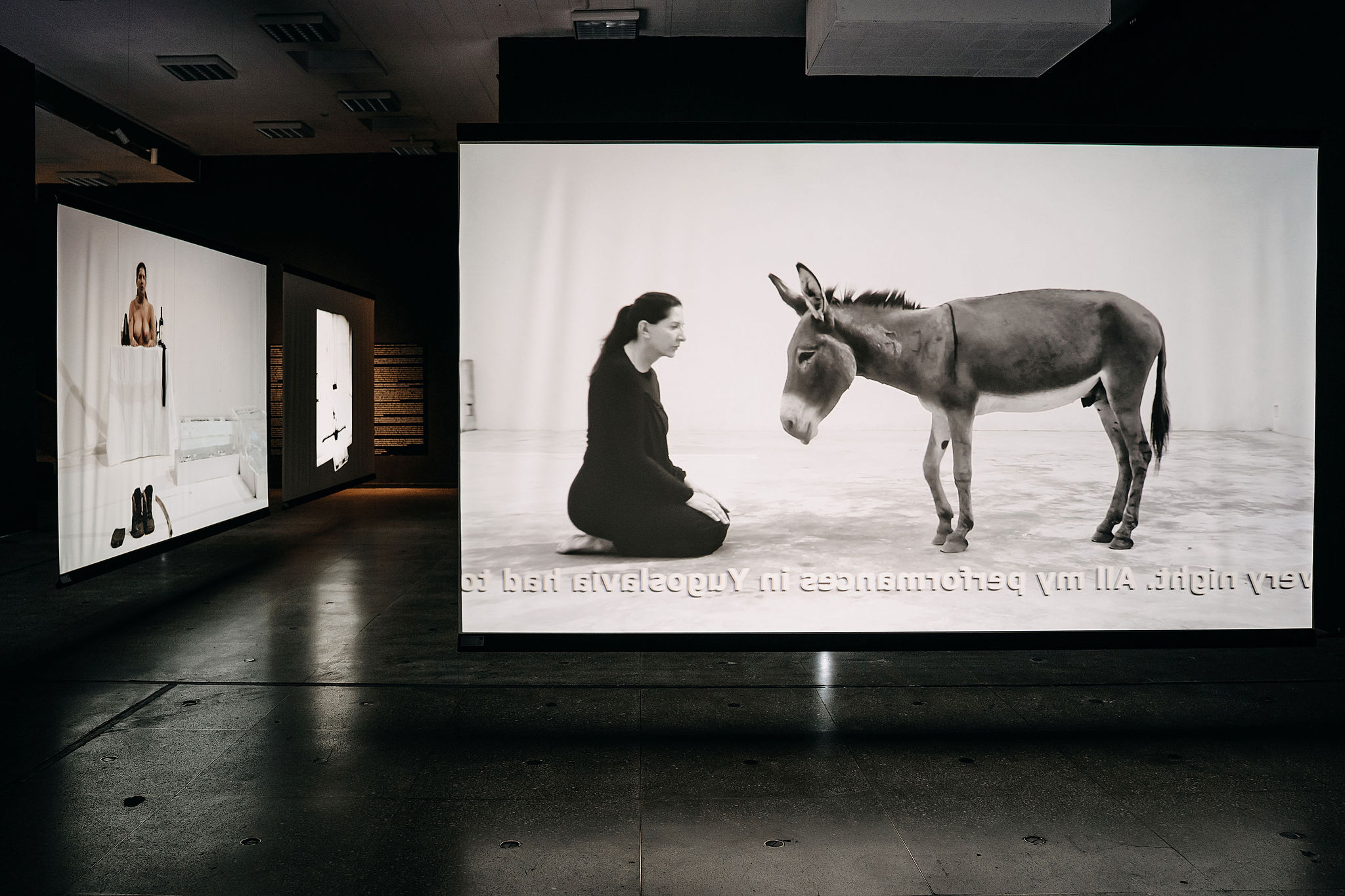 When: From 30 March 2022 to 31 July 2022
When: From 30 March 2022 to 31 July 2022
Where: Kaunas Picture Gallery
Admission at the exhibition is paid.
Organizer: Meno Parkas Art Park and “Kaunas 2022”
Programme of European Film Journeys
The renewed “Romuva” Cinema will finally open its doors in April. It will host a European cinema tour. 12 advance screenings of films of contemporary filmmakers, which will take place in the cinema and outdoor cinema sessions, invite you to discover the colourful diversity of European cinema culture. The program presents films on contemporary topics and the most important filmmakers in Europe today. “European Film Journeys” is for picky spectators and reviewers of good films!

When: from 22nd of April
Where: Romuva Cinema
Attendance at the exhibition is paid.
Organizer: Kaunas “Romuva” Cinema
Culture in the courtyards: Šilainiai
Culture to the Courtyards, the internationally acclaimed project, launched during Lithuania's first quarantine and organised by the Fluxus Labas!, will fill those living next door to one another with the excitement of anticipation, will make balconies resound with applause and joy as culture will once again fill Kaunas’s courtyards! Theatrical, dance, contemporary circus and music professionals will perform in the courtyards of 11 neighbourhoods. This time we invite you to take a seat in the balcony boxes of Šilainiai or choose a standing place in the courtyard area.
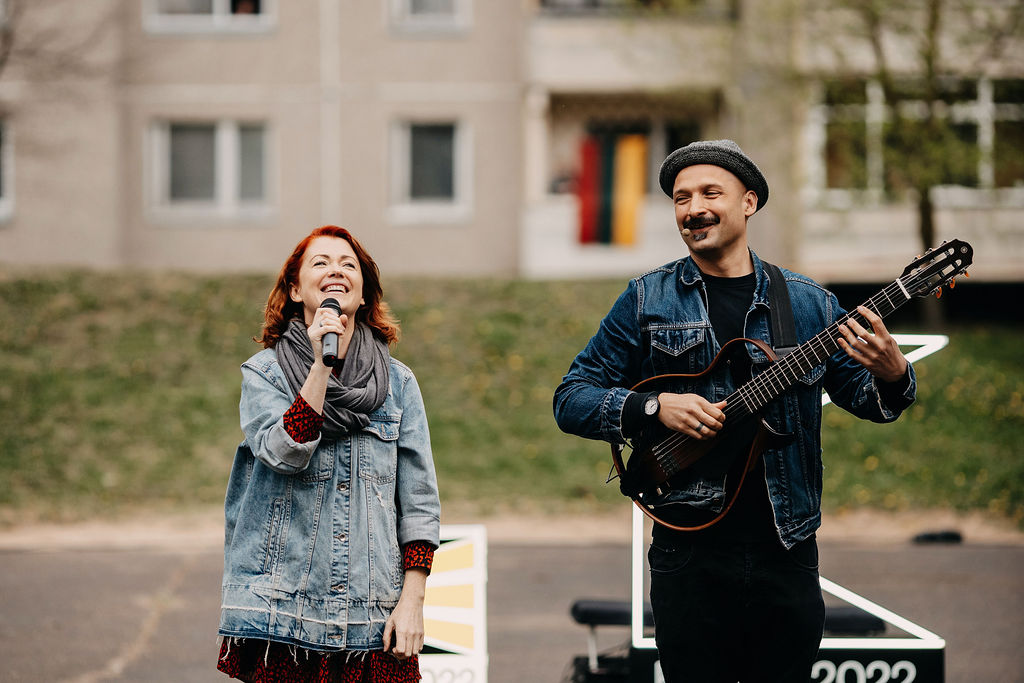
When: 19–21 April 2022
Where: Šilainiai Neighbourhood
Admission to the exhibition is free.
Organizer: “Kaunas 2022”
Art space “Artery”. Opening of a new cycle
The open-air exhibition “Blink” features sound and light installations, which are accessible around the clock but can be best appreciated after dark. There will be four Arterija exhibitions presented in the old town , each designed for a different season. The exposition's author is Saulius Paliukas (Kaunas Faculty of the Vilnius Academy of Arts, VAA), and its co-authors are Romualdas Požerskis and Rimantas Giedraitis (Kaunas Faculty, VAA). ARTERIJA, the open-air public art space of the Kaunas Faculty of the Vilnius Academy of Arts, is participating in the “Kaunas – European Capital of Culture 2022” programme.
When: 21 April 2022
Where: Kaunas Faculty of Vilnius Academy of Arts
Admission to the exhibition is free.
Organizer: Kaunas Faculty of Vilnius Academy of Arts
Japan Days in Kaunas “WA!”
“WA!”, the Days of Japan in Kaunas, is your ticket to the land of the rising sun. The festival's programme includes: a joint project by Aura and Ryu Suzuki, a renowned Japanese modern dance choreographer; a performance by the world-renowned calligraphy artist Aoi Yamaguchi, who invites visitors to explore this artform through a spectacular show; live drawings created by a robot; Hanami Matsuri, a traditional Sakura-watching festival spanning more than 1000 years; a concert by Tanaka Kyokusen, one of Japan's most famous traditional lute players; as well as numerous exhibitions, lectures, concerts, food tastings and other events.

When: From 25 April 2022
Where: Kaunas
Admission to the exhibition is free.
Organizer: “Kaunas 2022”, “Azija LT” MB, Kaunas Dance Theatre “Aura”, public bodies “Kultūrinės ir organizacinės idėjos”, “KyūmeikanKendo”
Exhibition “Kaunas – Vilnius: Moving Mountains”
The secret of the friendship between the rival cities – Kaunas and Vilnius – will be revealed by the co-exhibition of the MO Museum and the Kaunas City Museum. The expositions will uncover the fundamental interdependence of the two cities, how they have shaped one another, and how present-day Lithuania has emerged from the tensions between the two. The mountains and motifs of the exhibition are repeated in the exhibition halls of both museums, but they tell different stories. In this way, the concept and architecture of “Kaunas-Vilnius: Moving Mountains” embodies the very necessity for Kaunas and Vilnius to stay together: to see the whole exhibition, one must visit both cities.

When: From 23 April 2022 to 28 August 2022
Where: Temporary Gallery of MK Čiurlionis, MO Museum in Vilnius
Attendance at the exhibition is paid.
Organizer: Kaunas City Museum, MO Museum
Earlier opened exhibitions are ready to welcome visitors
Visit the installation of the non-conformist of the art world Yoko Ono in the historical Bank of Lithuania or the monthly cycle of exhibitions “100 years to Kaunas Art School. 12 Exhibitions. 12 Months”, which is intended to commemorate the centenary of the Kaunas School of Arts. The exhibition “Lithuanian Design: from Temporary to Contemporary” on display in the shop windows of Laisvės Alėja boulevard is still inviting visitors to admire the history of design. To deepen the dialogue with oneself, we invite you to the exhibition “That Which We Don’t Remember” by William Kentridge, a South African artist of Lithuanian Jewish descent.
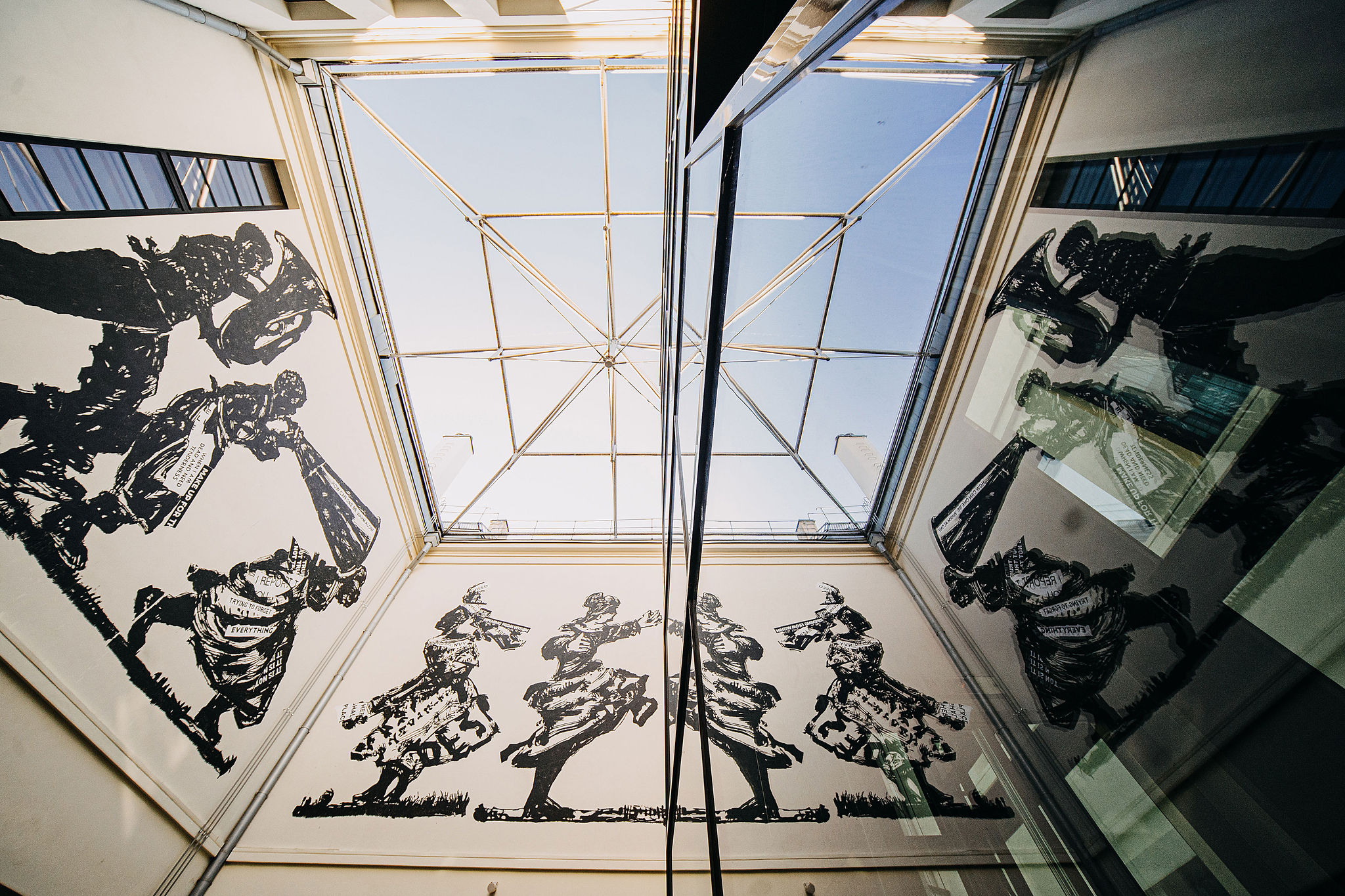
Full programme: www.kaunas2022.eu
“1972. Breaking Through the Wall”. An Exhibition about the Alternative Kaunas That Survived Suppression
Exactly fifty years ago, on 14 May 1972, Kaunas and Lithuania’s history was changed by an event in the city centre. Romas Kalanta, protesting against the Soviet regime, poured petrol on himself in front of the Musical Theatre and set himself on fire. His notebook bore the inscription: ‘My death was the fault of the system’.
This tragedy sparked an unprecedented public opposition, which even led to imprisonment for many young people who wanted to participate in the funeral that became protests (later called the Kaunas Spring), not to mention the suppression of the artistic ambition they had begun, at least in public. But in the underground, the spirit of freedom remained.
In 2022, Kaunas is a city of a free country, proud to be the European Capital of Culture. While bloody massacres are taking place hundreds of kilometres away in Ukraine, a number of elements of the Kaunas 2022 programme take on a new, even more significant meaning. The exhibition “1972. Breaking the Wall” is high on this list. “We are sure that this exhibition will touch a nerve. Through this exhibition, our city will engage in a candid conversation with itself like never before,” declare the organisers.
The exhibition, which opens on 14 May, will run all summer at the Kaunas Central Post Office, not far from the site of Kalanta’s self-immolation. The author of the idea and the exhibition’s curator is the art historian Prof Dr Rasa Žukienė (Vytautas Magnus University). She says that although the event is intended to commemorate the 50th anniversary of Kalanta’s death, it will also highlight the problem of the individual’s inner freedom, which has been directly linked at all times to the resistance against violence and oppression.
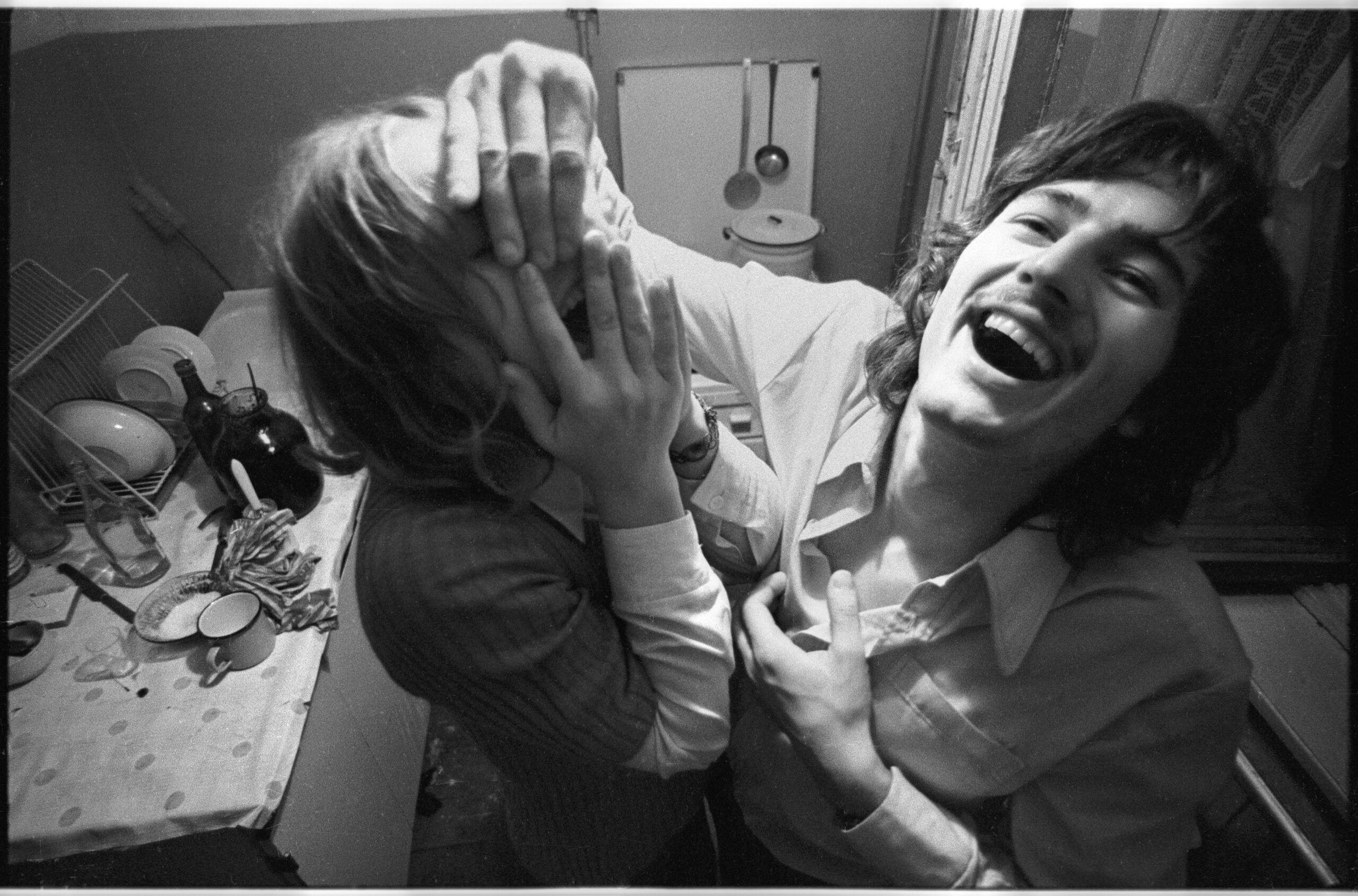
A Broad Spectrum of Ideas of Free Life and Dissatisfaction With Reality
“This exhibition is dedicated to events in Lithuanian life and the world of art whose existence is for some an integral part of their being, but for others, especially those born after 1990, hardly believable. For a large part of Lithuanian society, it is already hard to believe that this could have been the case in the Sovietised Lithuania, on the other side of the Iron Curtain, in the 1970s and 1990s: modern works were created, openly opposed to the system, the Soviet hippie movement developed, and then instead of liberty, love, and rock’n’roll, we were met with violence, and the suppression of public thought and art began,” explains the art critic.
Constraints and violence did not stifle the desire for freedom then, just as they do now. One of the bastions of freedom in the 7-8th decade of the 20th century was the city’s cultural scene - theatre, art, youth music groups, cinema. The exhibition will focus the gaze of contemporary Kaunas citizens and guests on the groups of the disobedient and those who disobeyed the system. These include the Kaunas hippies, rock bands, mime artists and professional painters, whose works reflected the moods of the members of the unfree society and who experienced ideological violence after the burning of Romas Kalanta.
R. Žukiene has managed to assemble an awe-inspiring team for the exhibition - the section dedicated to the memory of R. Kalanta is curated by art historian Rimantė Tamoliūnienė (Kaunas County Public Library), the works of art and photography have been selected for the exhibition by art historian Genovaitė Bartulienė (National M. K. Čiurlionis Museum of Art), theatre and pantomime are curated by art historian Edgaras Klivis (VMU), music - by composer Zita Bružaitė (Kauno “Santaka”), the cinema and video programme - by film critic Gediminas Jankauskas (VMU), the “Chronicles of the Catholic Church of Lithuania” - by historian Dr Arūnas Streikus (Vilnius University).
“My team is fantastic; each of them has been known to me for a long time as experts and admirers in their field. The team members have done a lot of research and in-depth studies; half of them are PhDs,” says Žukienė, who brought her team together two years ago when the exhibition concept was included in the Kaunas 2022 programme. According to the art historian, it was not difficult at all to convince her colleagues.
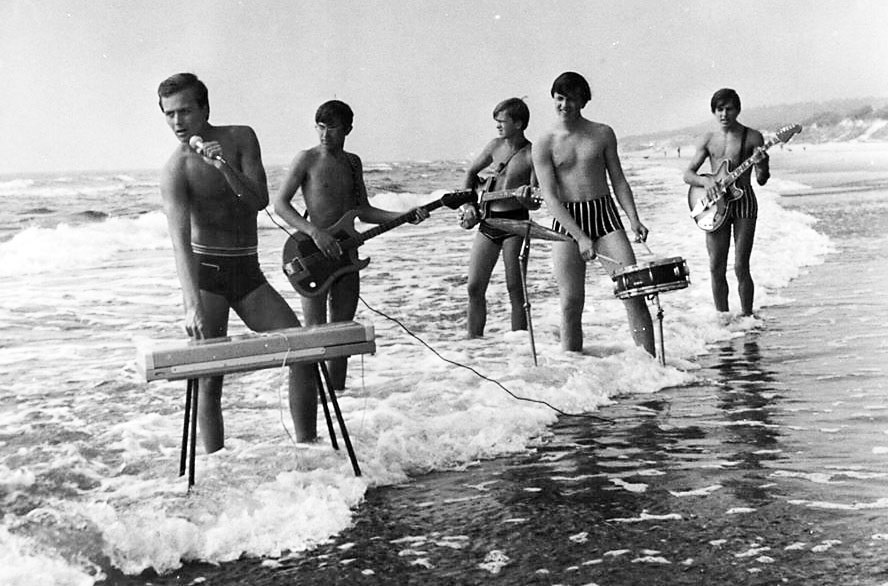
Guitars From Stolen Wood and a red Necklace
“1972. Breaking Through the Wall” is not just an exhibition of artworks. The mood of Kaunas Spring is created, and the stories of contemporaries are brought to life with various artefacts, documents, film stills from demonstrations or pantomime performances - and, of course, music and fashion. R.Žukienė and her colleagues had the opportunity to interact with an impressive number of people who remember 1972, either reviving acquaintances or making new ones, in the course of preparing the exhibition.
“The most striking thing for me was that almost every person over 50 years old, when asked about Kaunas in 1972, remembers something - their eyes light up, and they want to speak. So many years have passed, and not everything has been told and written down yet. I have heard many stories about how one was beaten by militia on Laisvės Alėja on 18 May 1972, how the attenuators in one’s parents’ transistor squeaked (they listened to Western radio stations), how one climbed over the fence into the furniture factory to steal a board to make a guitar, how the prisoners in Pravieniškės used to make clogs. There are many such stories,” the art historian intrigues. She points out that during the preparation of the exhibition, unique exhibits were found that could be of interest to museums in the country.
“At first, I was even shy to ask for the fashionable clothes of a past era. However, 40-50 years have passed. But it turns out that they do exist, and I got them - I got them, for example, from an artist who designed the fabric herself, printed it in a factory in Kaunas, modelled it and made a dress. And she knitted a red necklace for herself because she needed a red necklace. One woman, now a professor, had the idea to recreate a bag she had as a teenager with the inscription “Love, Art, Music”. She even discovered the same yarn. I already have that cool bag. We will display everything,” says R. Žukienė.
There will be discussions with the curators, historians, and participants of the 1972 Spring events in Kaunas during the exhibition. Educational programs will be offered for students and youth of different ages. The show and the conversations it provokes will encourage a more active dialogue between the generations, other countries and nations of Europe, who have different histories but still share many similarities that unite them.
“A common dialogue on freedom and the expansion of its boundaries in art and society, thinking about cultural diversity and place of cultures in the modern world is relevant and necessary both in Lithuania and Europe,” believes the curator of “1972. Breaking Through the Wall”.
Location: Kaunas Central Post Office
Time: 14 May 2022 - 31 August 2022
Organiser: Kaunas 2022
Partners: National M. K. Čiurlionis Museum of Art, MO Museum, Lithuanian National Art
Museum (Vilnius), Ninth Fort Museum, Vytautas Magnus University, Valdas Adamkus Library-
Museum, Kaunas County Public Library, Kaunas City Museum, Embassy of the Czech Republic
in Lithuania, City Gallery of Prague (and others).
Kaunas Modernist Architecture-inspired Film to Debut in Canada
Directed by Aideen Barry, “Folds/Pleats”, presenting the modernist architecture of Kaunas, Lithuania and dedicated to the year of European Capital of Culture Year of Culture, is starting its festival journey. On April 10, the film will be screened for the first time in Canada at The Architecture + Design Film Festival (A+DFF) in Winnipeg.
The annual film event showcases critically acclaimed films focusing on the importance of architecture and design in everyday life. The festival presents a wide range of design-oriented topics from architecture and the city to graphic and product design.
It was the year 2019 when the Kaunas 2022 team decided to make sense of the modernist architecture awaiting UNESCO recognition in a unique film. The renowned Irish artist Aideen Barry, the winner of the prestigious Golden Fleece Award, whose work is exhibited in museums, contemporary art centres and private galleries worldwide, was invited to implement the idea.
The film was made through an unusual process. The artist’s creative practice is based on community involvement: the plot is based on the stories told by the citizens, and the residents of Kaunas become characters in the film. The surrealistic “Folds/Pleats” combines the city’s heritage, history, and its people’s fictional novels.
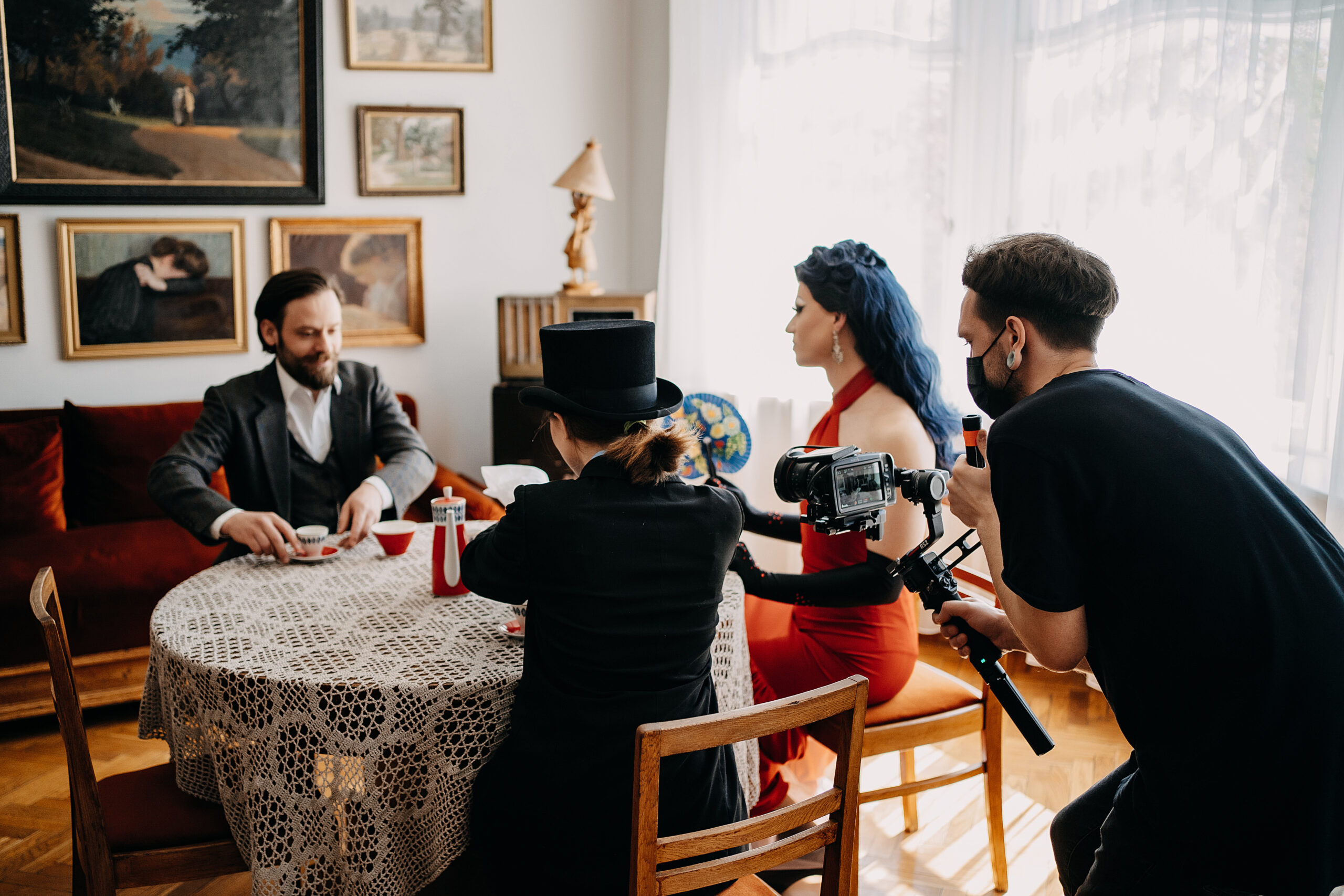
The title of the architectural film is a metaphor for the recurring elements in interwar architecture and the creative process itself: the plot is folded from thousands of photographs. Stories fold between stories, buildings between buildings. The viewers, together with the characters, peek into the interiors of the buildings, marvel at the typical rounded windows of Kaunas and the elegant staircase doors, and gaze at the ceiling as if lying on a carpet with a cigar smouldering in between his fingers.
“With the whole creative team, we waited long and anxiously to see which international festival would host the first screening. It is incredible that the magical story of Kaunas Modernism is travelling so far away, to another continent, to Winnipeg in Canada. We are thrilled,” says Viltė Migonytė-Petrulienė, the Modernism for the Future programme curator.
Link to the trailer
Lithuanian audiences will be able to see the architecture film in cinemas later this year. The first screening is scheduled for 21 September 2022 in the place where the film was born, Kaunas, at the newly renovated historical Romuva Cinema. It will then travel to cinemas across Lithuania.
The film was initiated and supported by the Kaunas - European Capital of Culture 2022 programme Modernism for the Future.
Trailer: https://www.youtube.com/watch?v=JGgDVpe00vk
Photo author Martynas Plepys
The European Capital of Culture Forum to Adress the Legacy of Kaunas 2022 and the Preservation of Free Europe
As spring is gathering pace, the most dynamic season of the Kaunas 2022 programme is upon us. However, the year of the European Capital of Culture (ECoC) is drawing to a close with each passing day.
What should the Kaunas city and Kaunas region expect after 2022? Will the cultural life continue in the same rhythm? What can we do today to ensure the continuity of communities’ and artists’ initiatives? These and other questions will be raised and answered in discussions and informal conversations at the fifth European Capital of Culture Forum, scheduled for 19 May this year. The theme of this year’s event is “Legacy”.
This year’s European Capital of Culture Forum will occur during a very intense cultural programme and will mark the weekend of “Santaka” (Confluence), the second major event of the Contemporary Kaunas Myth trilogy. As every year, the Forum’s main aim is to raise the professionalism and vigour of the cultural sector, reminding each other how culture contributes to the development of cities and regions.
The international event, which started as one of the initial events by the team of Kaunas 2022, has over the years become an essential platform and opportunity for past, present and future ECoC teams and representatives of cultural institutions operating at the European level to meet. And, of course for cultural operators, artists, businesses, researchers, event participants - those without whom neither the Forum nor the whole ECoC programme would be valid.
“The European Capital of Culture project was planned for five years ahead, as a continuous learning and creative process. The Forum has been feeding the project and the cultural community with visions and ideas that we drew from other Capitals of Culture, and more and more from the local cultural field over time. Today, we are halfway through the Capital of Culture year and as the project reaches the finish line, the question is: what next? What vision will we have at the end of this year? What will remain after the project ends? To this end, the Forum will look at the experiences of other European Capitals of Culture, discuss the impact and sustainability of the Kaunas - European Capital of Culture project, as well as how to preserve the project's strongest asset - the active co-creation of communities and the cultural network,” says Ana Kočegarova-Maj, Head of Programme of Kaunas 2022 and curator of the European Capital of Culture Forum.

Kočegarova-Maj hopes that, as every year, the Forum will provide participants with an experience of fellowship and an opportunity to be part of a wide circle of cultural players: “Without help and struggle, the best thing we can do in the face of war is to stay calm and do our job, building a resilient society and strong ties between them. That is why I am particularly pleased that the live circle of participants will be joined by close colleagues from the Lviv Institute for Cultural Strategy, who are the purest example of cultural activism and community mobilisation.“
Immie Jonkmann from Leeuwarden 2018 (The Netherlands), Beatriz Gracia, Senior Research Fellow at the University of Liverpool and Associate Director of the Centre for Cultural Property (UK), among others, have already been confirmed as participants in the European Capital of Culture forum.
The most pressing topic on the minds of professionals in all fields at the moment is the ongoing war in Ukraine. It is a topic that raises the difficult question: how do we preserve a free Europe? That is why a special session of the Forum will be dedicated to the war. A conversation with Yulia Khomchyn, Member of the Lviv City Council, Director of the Institute of Contemporary Art and Head of the Lviv Institute for Cultural Strategy, will focus on the latest developments and how Ukraine can be assisted.
Agata Etmanowicz (President of Impact Foundation, Poland), already well known to many people in the cultural field of Kaunas, will moderate a session on the long-term impact of the capacity building programme and audience development. She is positive that 2022 is (just) a stop on the way, not a final destination: “We are going to summarise the Audience Development Programme for Kaunas 2022 with all its ups and downs and through different perspectives. The storytellers will be organisers, individual participants, organisations and institutions. There will also be a chance to exchange experiences with Rijeka 2020. To conclude, we will also look at the scenarios for the future.”
Among the Lithuanian participants is sociologist Tadas Šarūnas, who is currently conducting an external evaluation of Kaunas 2022. “In our quest for socially and economically powerful cultural policies, we seem to have forgotten to observe the very bases on which this power stands. I will be inviting to come back to observations of everyday life. After all, this is a scene where cultural interactions make their healing touch,” he invites.
Roberto Magro (Italy/Spain) and Džiugas Kunsmanas (Lithuania) will be presenting their magical experiences in the Kaunas district. They will reflect on the foreseeable and unpredictable impacts of their artistic work in the communities of Linksmakalnis, Mastaičiai, Neveronys, and Bubiai. They describe their experience as “creating territories of lived and imaginary poetry”.
The Forum will also look at the impact of the ECoC - not only the numbers in the reports but also the profound changes and the theme of the future after Kaunas 2022. Questions that make sense to ask now are what results, at the social and cultural level, have been achieved by Kaunas and the other ECoC and what measures can be taken to maintain a sustainable continuity of such impact.
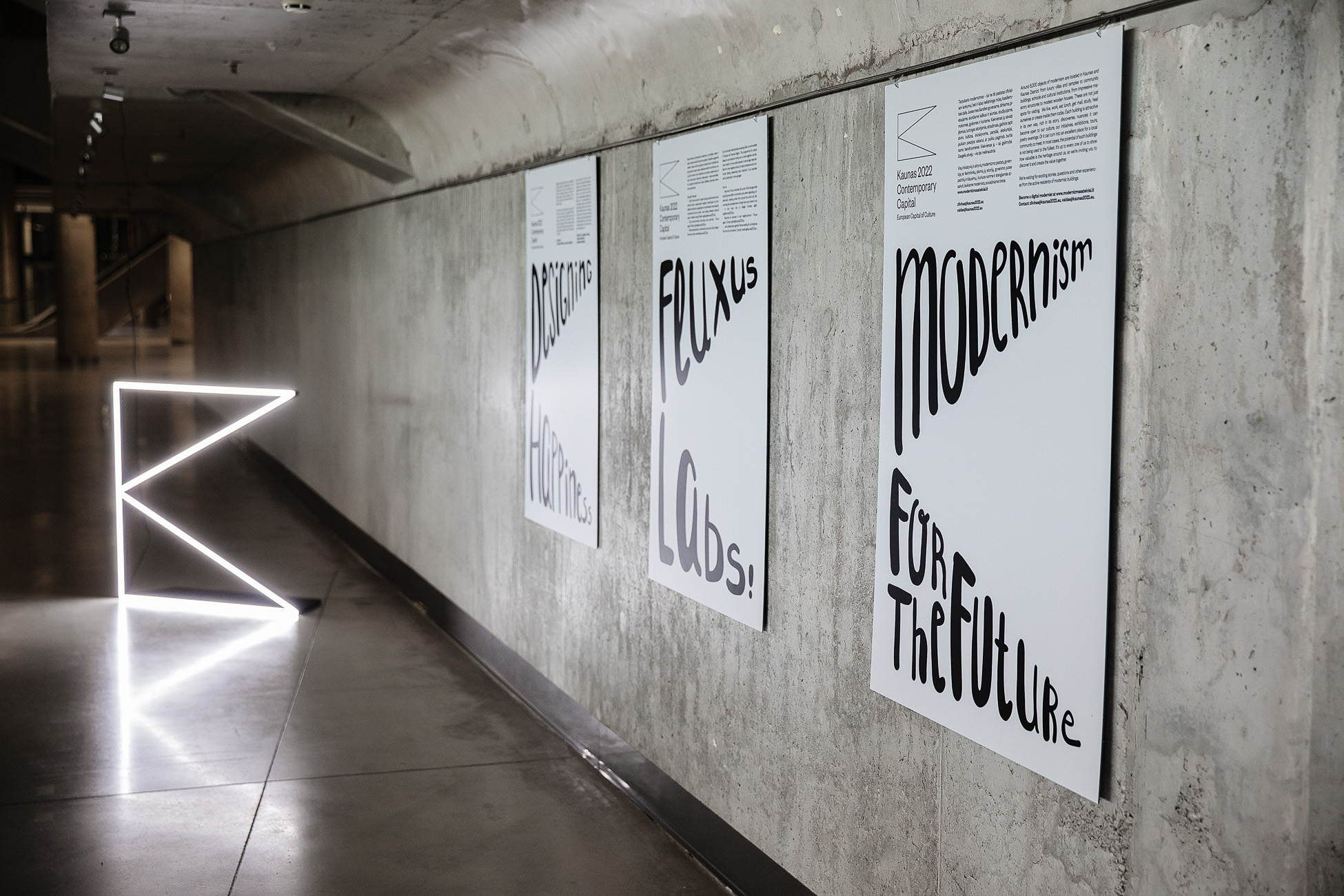
Of course, it is crucial to define the legacy, and the Forum will also allow time for this. There will be an opportunity to discuss the footprints of the Capital of Culture on cultural life - its intensification, new festivals and initiatives, innovative practices, and increased cooperation between institutions. It is also about more culturally active neighbourhoods and districts, more vibrant community contacts, changing and purifying identities of the city and the district, and an altered perception of historical events and heritage. The Forum will also look at the examples of other capitals - what results have been achieved in other cities and what measures have helped prevent the loss of heritage.
The Forum will take place on 19 May at Žalgirio Arena in Kaunas, Lithuania.
Registration: https://forms.gle/TnssBVgio1AeVLf29
Programme: https://forumas.kaunas2022.eu
Photo author Martynas Plepys
OPTIMISMO Festival in Kaunas Aims at Strengthening the Link Between the Urban Past and the Sounds of the Future
OPTIMISMO is a new electronic and experimental music event that will take place in Kaunas, in a former industrial quarter and other sites in the city on 3-5 June 2022. It is presented by Kaunas - European Capital of Culture 2022 and its Modernism for the Future programme, which aims to activate an emotional connection with the past and its monuments that have survived to this day.
How can we talk about positive things when the world around us is turning upside down, ideals are falling apart, meanings are changing, and we can no longer communicate? In the 19th century Bialystok, a melting pot of nations, the Polish-born Litvak Ludwik Lazaris Zamenhof searched for very similar answers. In his environment, conflicts between the ethnic groups living there broke out almost every day - the boy understood early on what happens when people cannot get along because they don’t talk to each other.
It was the idea of Esperanto, created by a man who also lived in Kaunas, that became the springboard for the creation of the city’s new festival OPTIMISMO, where the historical past and industrial heritage interact harmoniously with contemporary experimental and electronic music that is soaked with future. The optimism was shared between the Esperanto linguist and the creators of Kaunas, a city that grew sevenfold before WW2, and the belief in a more prosperous, friendlier future.
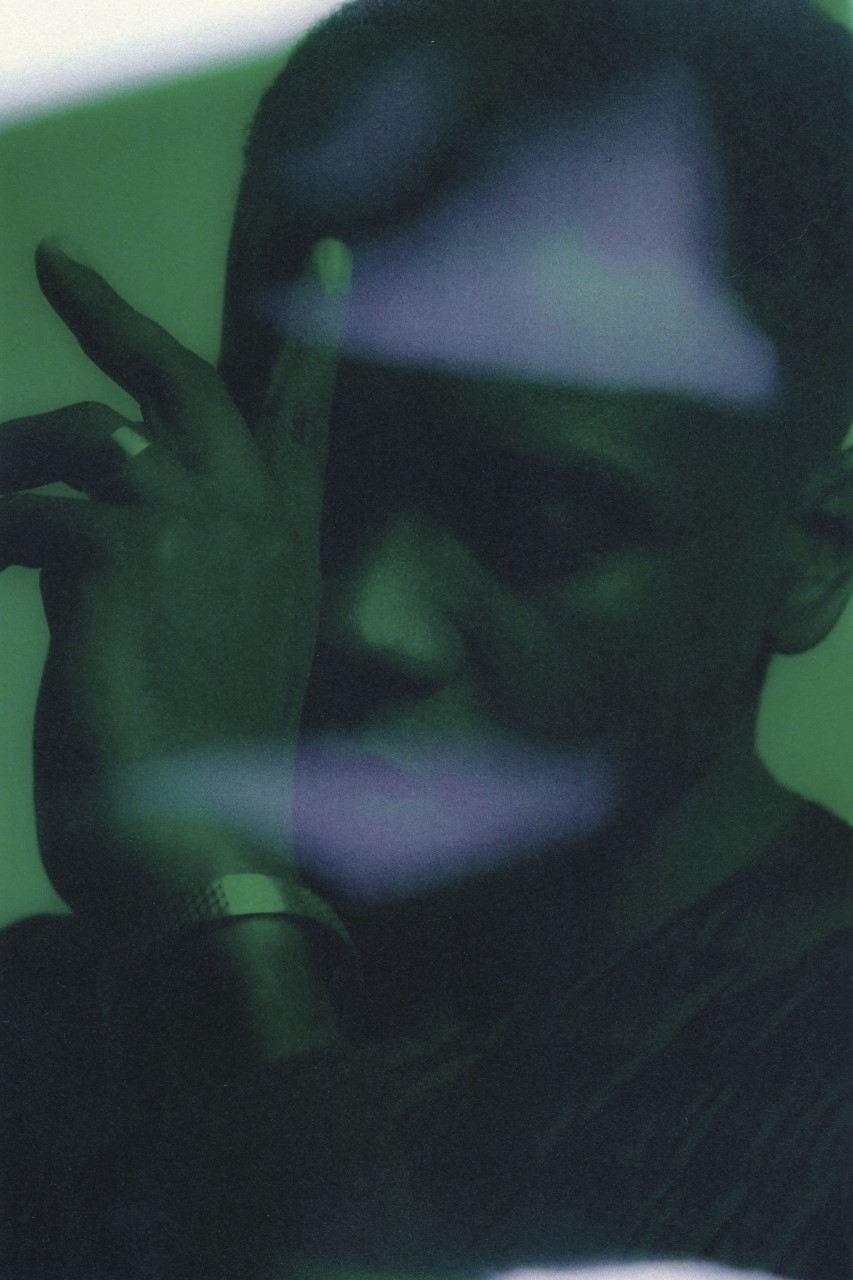
Optimism as a way to Move Forward
Kaunas’ fast pace a century ago was driven by the ambition to build a better, more vibrant and exciting future. To build with a fresh and functional modernist approach. Times have changed, and concepts of the present and the future have changed, but optimism is still perhaps the only thing that holds our collective consciousness. The festival organisers were indeed inspired by the cultural phenomenon described extensively by historian Marija Drėmaitė and colleagues in the exhibition and the accompanying book bearing the same name.
OPTIMISMO is a joint creation of two Lithuanian electronic music organisations - Digital Tsunami, which curates international events and the label of the same name, and Ghia, which finds inspiration in the industrial body of Kaunas.
“Writing about music is as difficult as dancing about architecture,” a phrase attributed to many creators, also found a place in the thinking about the OPTIMISMO programme, its setting and the artists who will come to the European Capital of Culture from many countries across Europe and the world, including Lithuania. The musical programme of the event will bring together different experiences and invite one to participate, listen and grow your understanding of sound, space and technological possibilities.
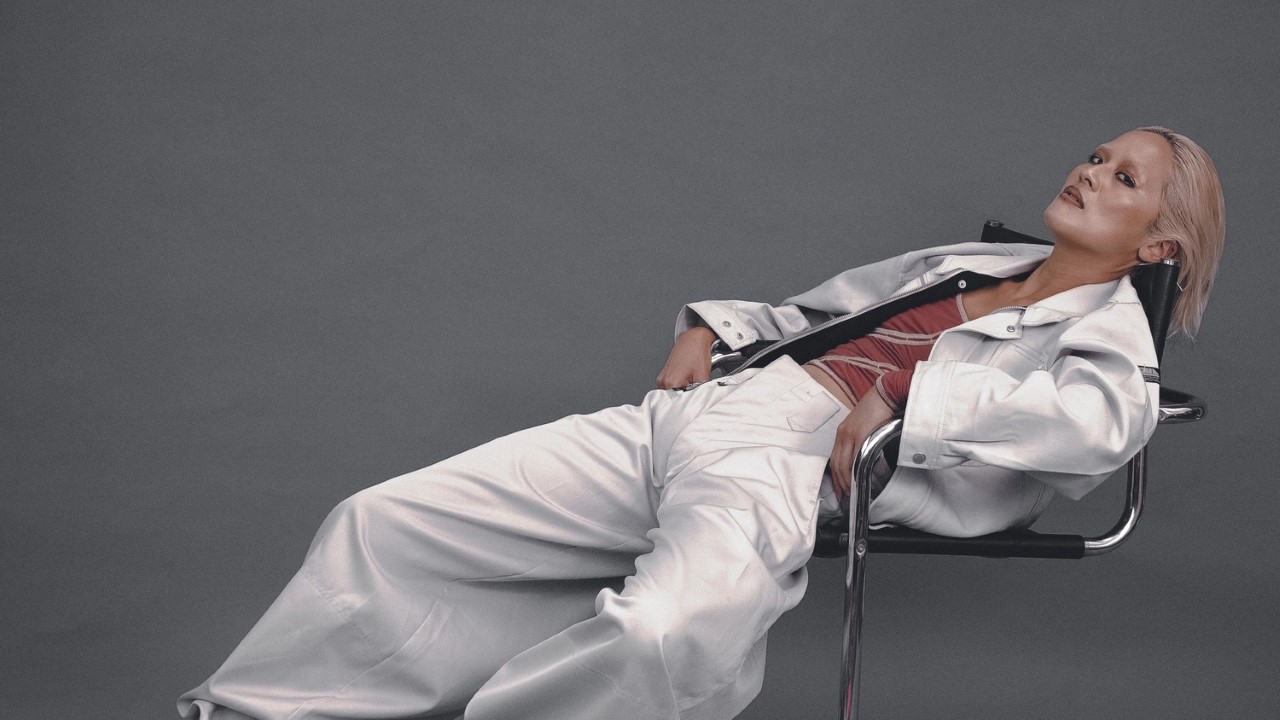
Guests of OPTIMISMO and their urban stories
Every piece of art and its creator is inseparable from a context. Thus the guests of OPTIMISMO are presented to the public not just by short musical biographies but also by their relationship with homelands and other urban contexts.
We are looking forward to discussing the importance and meaning of colonial architectural heritage, namely cinemas, in Angola with Nazar, who returned to his native country only when the 27-year Angolan civil war ended in 2002. The artist’s creative world centres around the extreme violence, injustice and omnipresence of a repressive state during and after the, while exploring hope, resilience and pride in a country torn apart by conflict.
Just as modernist architecture became an optimistic way of life and growth for Kaunas, the new yet temporary capital of reborn Lithuania, after WW1, a similar process took place in the Philippines a couple of decades later, after WW2. In the post-colonial period, the Filipino architects not only took on the pure surfaces and precise forms of modern architecture but infused the structural decisions with national elements. Thus, globally recognised architecture that still bears the national spirit is indeed a common thing between the Philippines and Lithuania.
Interestingly enough, Corin, the Filipina-Australian electronic producer, composer and performer working in performance art, sound design, theatre and club spaces, has become interested in her cultural connections to the Philippines, her mother’s birthplace and the landscape connected to it. “I’ve already begun to hear how it influences my creative output. Over the next year, I hope to produce an entire album which explores this connection”, said Corin in her recent interview with 15questions.
Yet another guest of OPTIMISMO is based in Shanghai. Osheyack is an integral member of the city’s electronic music scene that centres around ALL Club. The venue itself is located in a fascinating area near Changle Lu, a historic road in what was the French Concession between 1849 and 1943. In the 1920s, it was considered a premier residential area of Shanghai. Among new residential buildings also rose shikumen, a local architectural phenomenon – a cultural blend of the elements found in Western architecture with traditional Lower Yangtze architecture and social behaviour.
A half-Polish, half-Malian Parisian who occasionally enjoys Hungarian songs – these and more elements all add to the unique talent that calls himself Bambounou. On top of everything, he has just announced a new EP in the form of a wax candle sculpture of his body. ‘La Sagrada’, the artist says, was inspired by the beauty of La Sagrada Familia’s unfinished architecture in Barcelona, Spain.
Krikor (FR), Nick Klein (US/NL), Black Zone Myth Chant (FR), Animistic Beliefs (NL), and Pandora’s Jukebox (UK) are among the other names already announced in the OPTIMISMO program. More artists are to be revealed soon, as well as another exciting location for the festival.
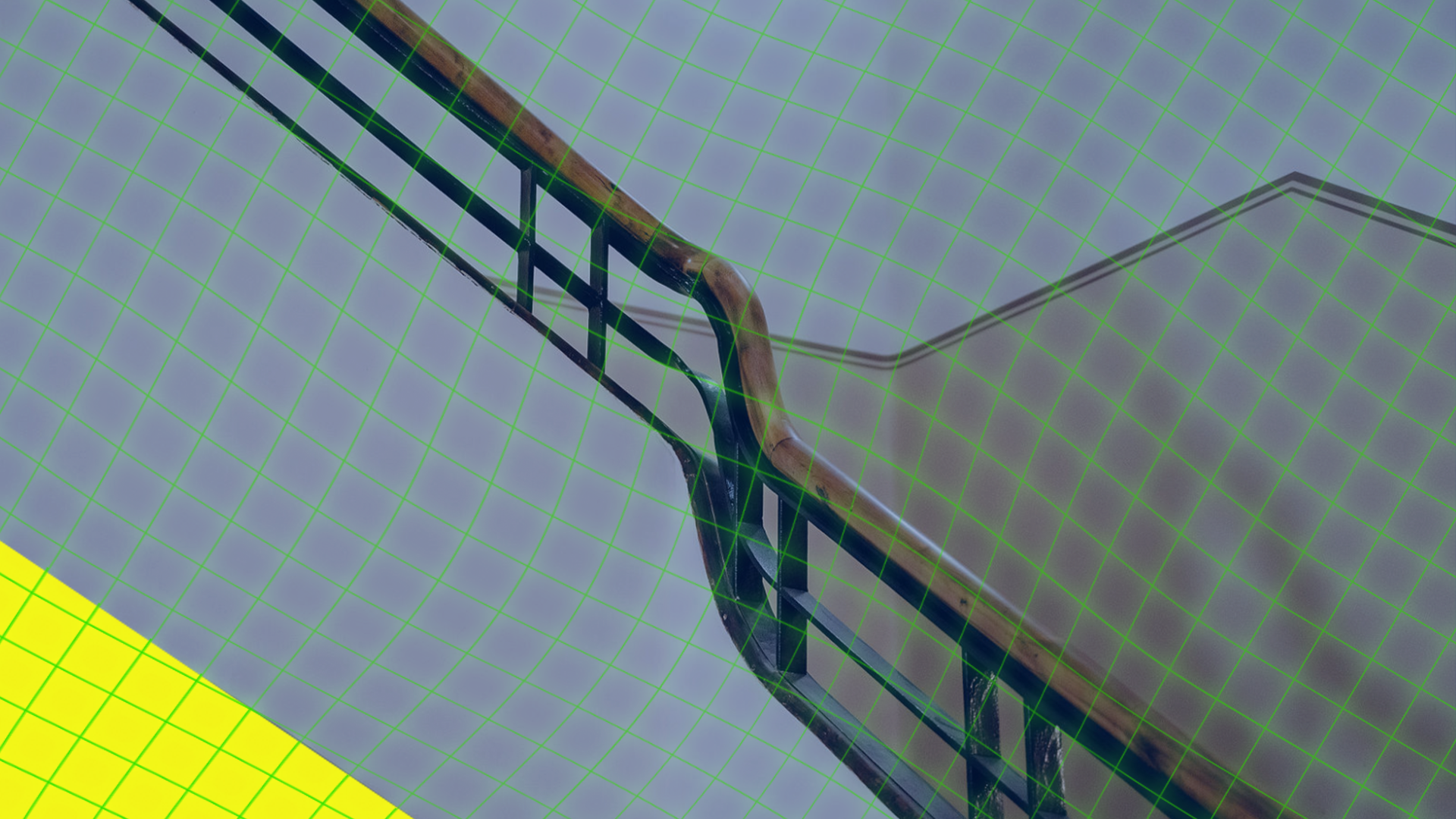
Follow www.optimismo.eu for up-to-date news, tickets and other information. The design of the website and the visual aesthetics of the festival were also inspired by the modernist heritage of Kaunas. The design department consists of Tadas Bujanauskas and Aistė Ambrazevičiūtė.
“CulturEUkraine”, a cultural-creative space for Ukrainians, opens in Kaunas: here we will find each other
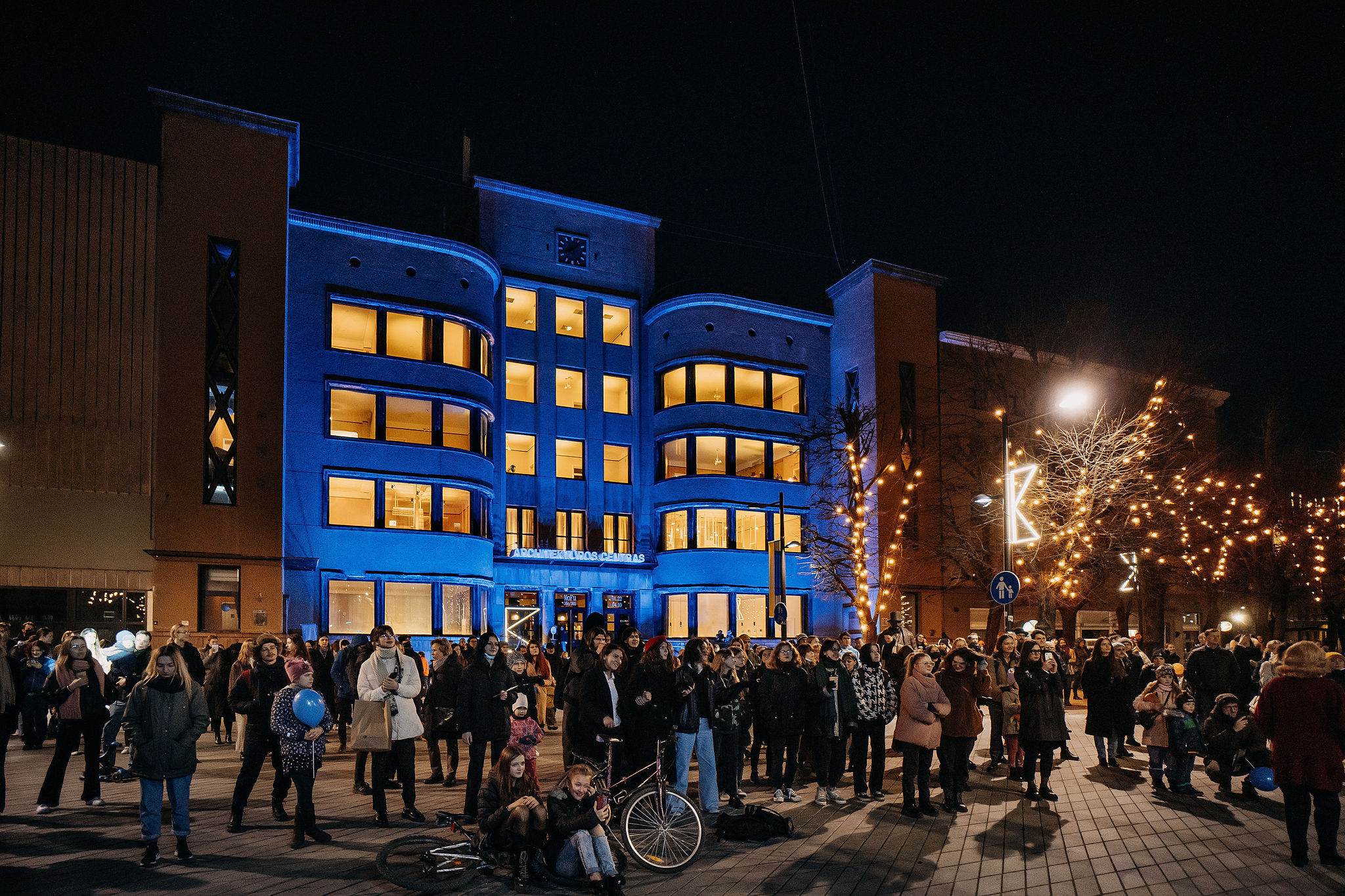
The creative-cultural space “CulturEUkraine", aimed to help Ukrainian people, who are fleeing the war and choosing Kaunas as their temporary home, was opened and presented to the public yesterday in Kaunas, in the historic Central Post Office. On the opening day, the premises of the Centre were a hive of activities: various organisations, artists, health experts and other initiatives providing and organising support for Ukraine, as well as the citizens and the first members of the emerging community – Ukrainian citizens – came to visit the Centre. In the evening, the opening of the Centre was marked by a “blue and yellow" solidarity concert featuring Lithuanian and Ukrainian performers.
As previously announced by one of the main initiators and creators of this Centre – the representatives of the European Capital of Culture “Kaunas 2022” – this Centre aims to provide a space and a place where people who have fled the war could continue their creative activities, seek inspiration and opportunities for new ones, and to simply meet, communicate, and find a bright emotional haven, which is, for the moment, of vital importance to the people that are exhausted by the horrors of war.
The Centre was visited by those who want to help and the first members of the community on the opening day
On the opening day, the 3rd floor of the Kaunas Central Post Office, which is planned to house open spaces for creativity and collaboration, art therapy sessions, communication, and educational activities, was a hive of activities: various organisations and initiatives gathered here to inform, help and support Ukraine and its people. The new Centre was also full of citizens who wanted to contribute to the creation of the Centre in various ways.
The well-known big organisations, including the Lithuanian Red Cross Society, Save the Children, and the Order of Malta Relief Service, took part in the contact fair and provided advice and information to all those who wanted to help or volunteer to join the support activities.
The representatives of the Kaunas Faculty of the Vilnius Academy of Arts were invited to join painting activities and practice art therapy. According to the organisers of this activity, it is not only a leisure activity but also an activity that enhances emotional well-being, which gives art therapy even more value and meaning.
The representatives of “CulturEUkraine” emphasized that the aim is to have a place for everyone - from the biggest to the smallest, so both when planning future activities and on the opening day, a lot of attention was paid to children – they were entertained by colourful animators, who met the small ones and their mothers at the entrance of the Centre, and invited them to engage in dynamic, educational activities.
The modernist-style premises offered many ways and forms to contribute to the financial support for Ukraine through the purchase of merchandise: “Kaunas 2022” invited to buy T-shirts supporting Ukraine that are decorated with drawings by the children of the Hero's School, and the stand of Kaunas Artists' House offered brooches with a sunflower motif carrying a symbolic meaning.
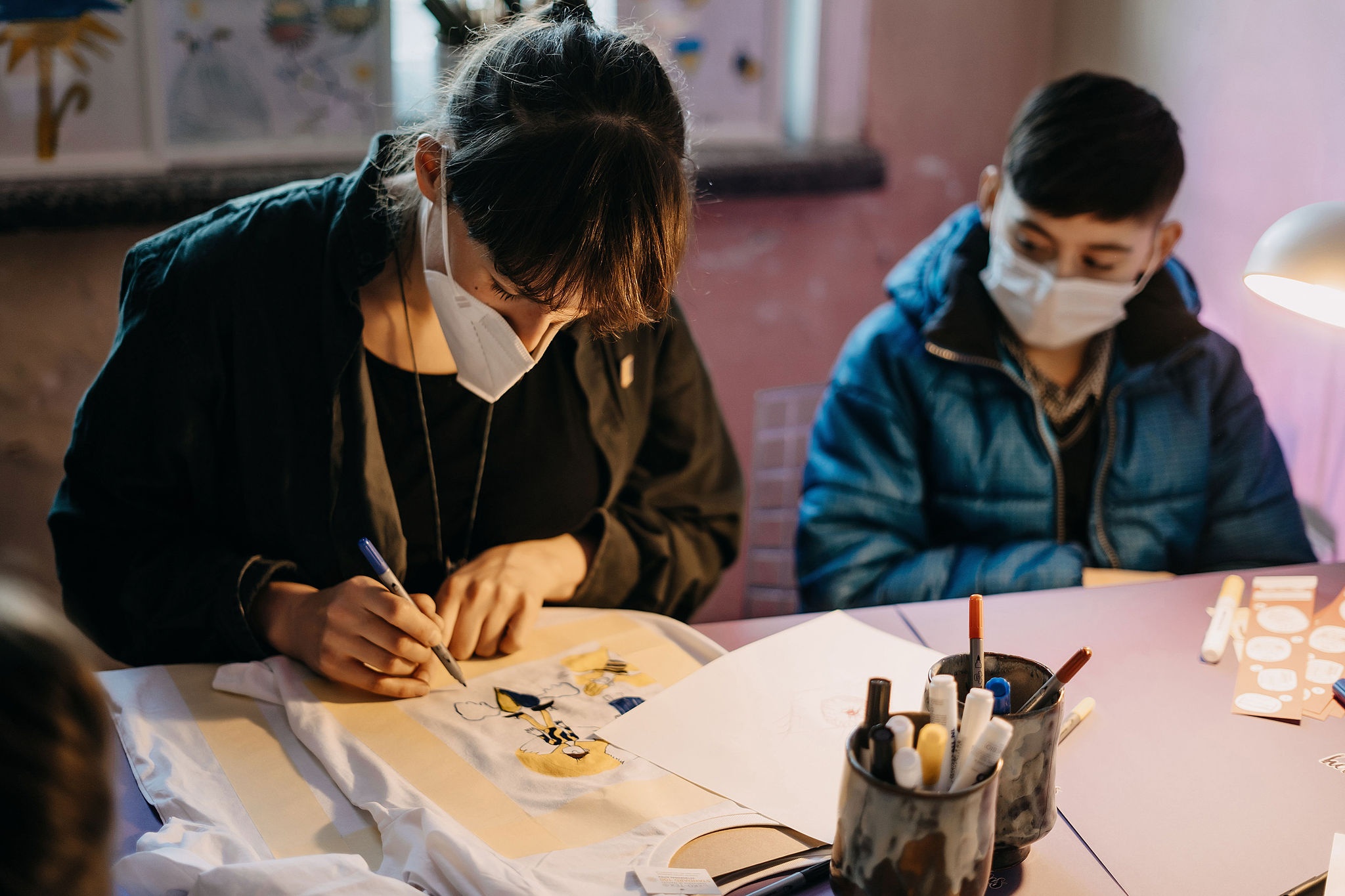
The community of Ukrainians in Kaunas: this is a space for our self-realisation and preservation of culture
The opening event was also attended by members of the Ukrainian community, who welcomed the idea of the Centre and confirmed the need for such a place. Volodimir Vasilenko, one of the representatives of the community, stated that this is a space for their self-realisation.
"For a long time, we didn't have a physical space where we could simply meet and talk, which made it difficult to build and develop the community as such. We are happy that we will have a space for self-realization, which will make it possible to learn languages and organize other cultural activities. It is a possibility for us to find each other and preserve our culture," Vasilenko spoke about the meaning of "CulturEUkraine".
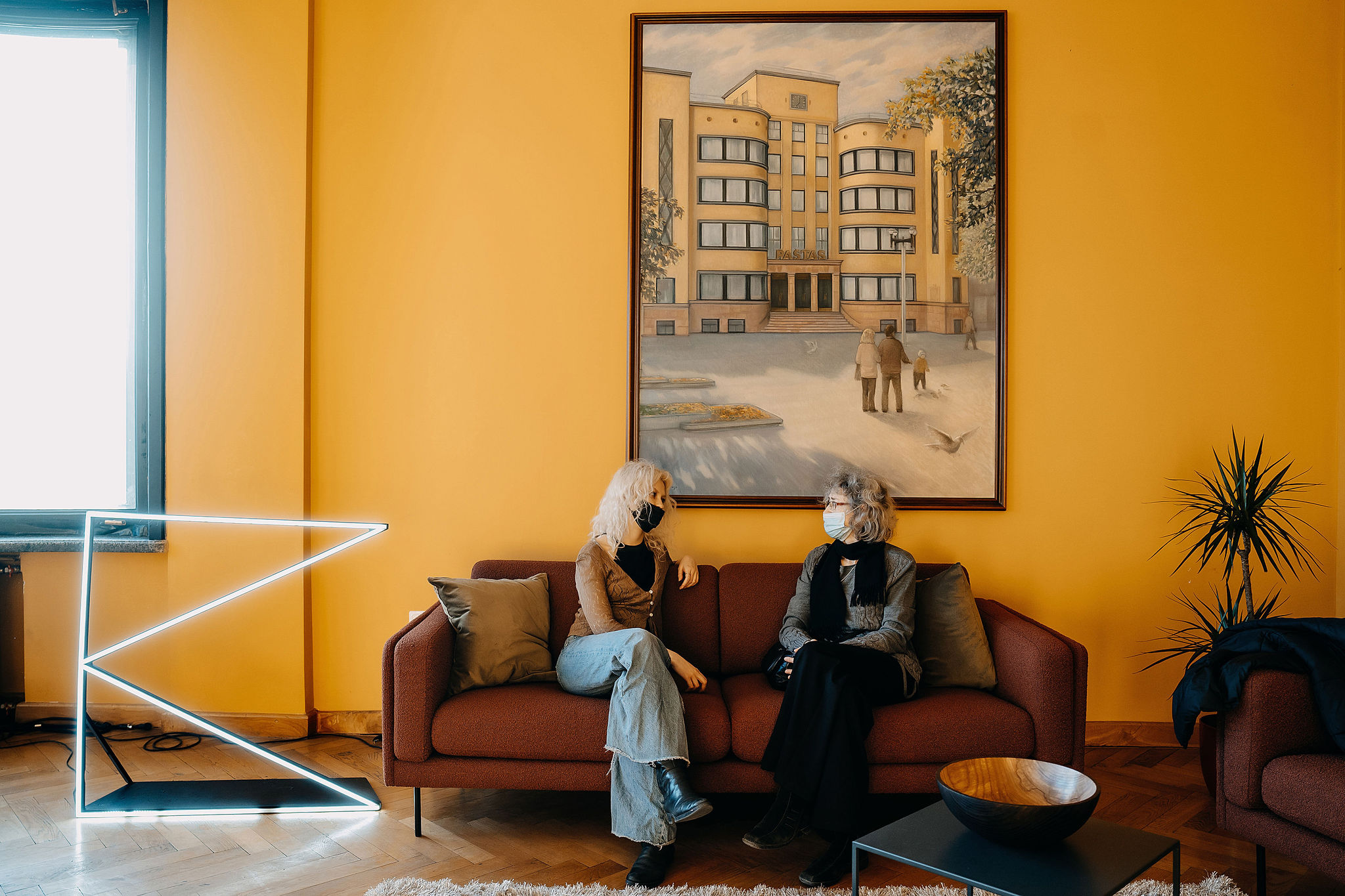
"The Blue and Yellow" concert featured exciting performances and sent a strong message: Ukraine will stand
The opening of the Centre in the spaces around the Post Office, which was decorated by blue-and-yellow lights, was marked by a gesture of solidarity: a joint concert of Lithuanian and Ukrainian artists took place on the stage on the pavement of Laisvės Boulevard.
The concert was opened with the singing of the Ukrainian national anthem by Kiril Dernovoj, an 11-year-old Ukrainian who arrived in Lithuania several weeks ago. Kiril, who showed his powerful voice and firm posture on stage, touched many people’s hearts – the audience greeted the little Ukrainian with applause and shouted “Slava Ukraini".
Another performance by Ukrainians – a trio of musicians coming from various parts of Ukraine, who had just met a few hours earlier and who didn’t know each other until the morning of the performance day – was also very exciting. A flawless instrumental performance of classical works by the trio of Kondratyeva Olga Mikhailovna (violin), Nekh Nikita Alexandrovich (violin), Radkova Natalia Stanislavovna (violin) delighted the audience.
The 3rd Secretary of the Ukrainian Embassy to the Republic of Lithuania, Elena Kuzmenchuk, in her short but strong speech on the stage thanked Lithuania for its support and conveyed a clear message that Ukraine and its people, showing their strength, will withstand any difficulties.
The concert also featured Lithuanian artists: songs by Šarukas Joneikis (member of the band “Garbanotas”), Clara Giambino, electronic music performer Mesijus and mathematical rock band “jautì” were performed.
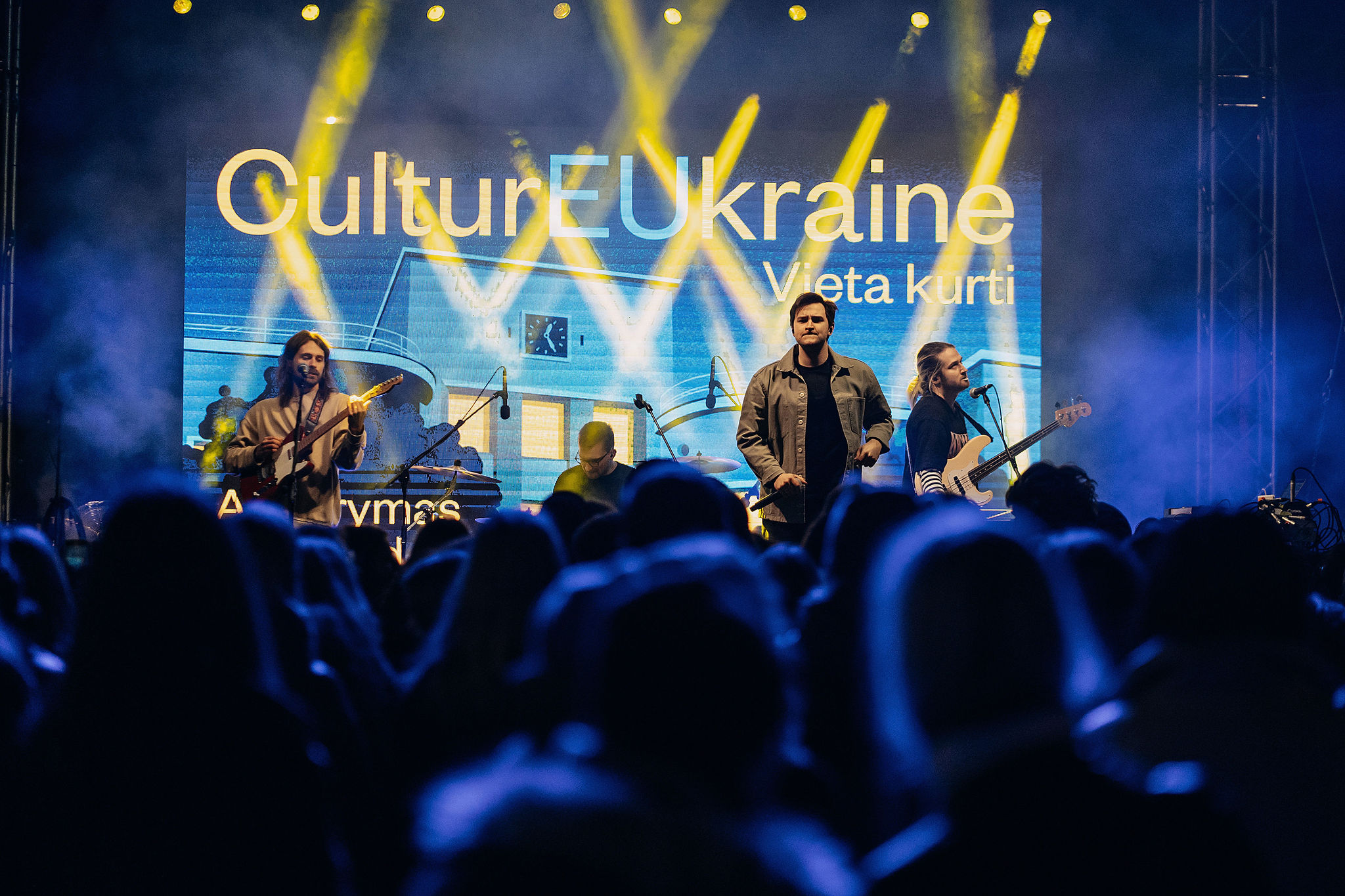
The opening of the Centre is just the first step toward further activities
During the closing ceremony, Virginija Vitkienė, Head of “Kaunas 2022”, emphasised that the opening of the Centre is only the first firm step towards big, sometimes full of challenges, works. Activities for Ukrainians will start here next week and registration is open now in this form.
The curators of the “CulturEUkraine” space remind that citizens are still actively invited to contribute to the creation of the Centre by donating essential household items, especially IT devices - computers, monitors, tablets, etc. We invite you to register any items you have that you would like to donate to the Centre here.
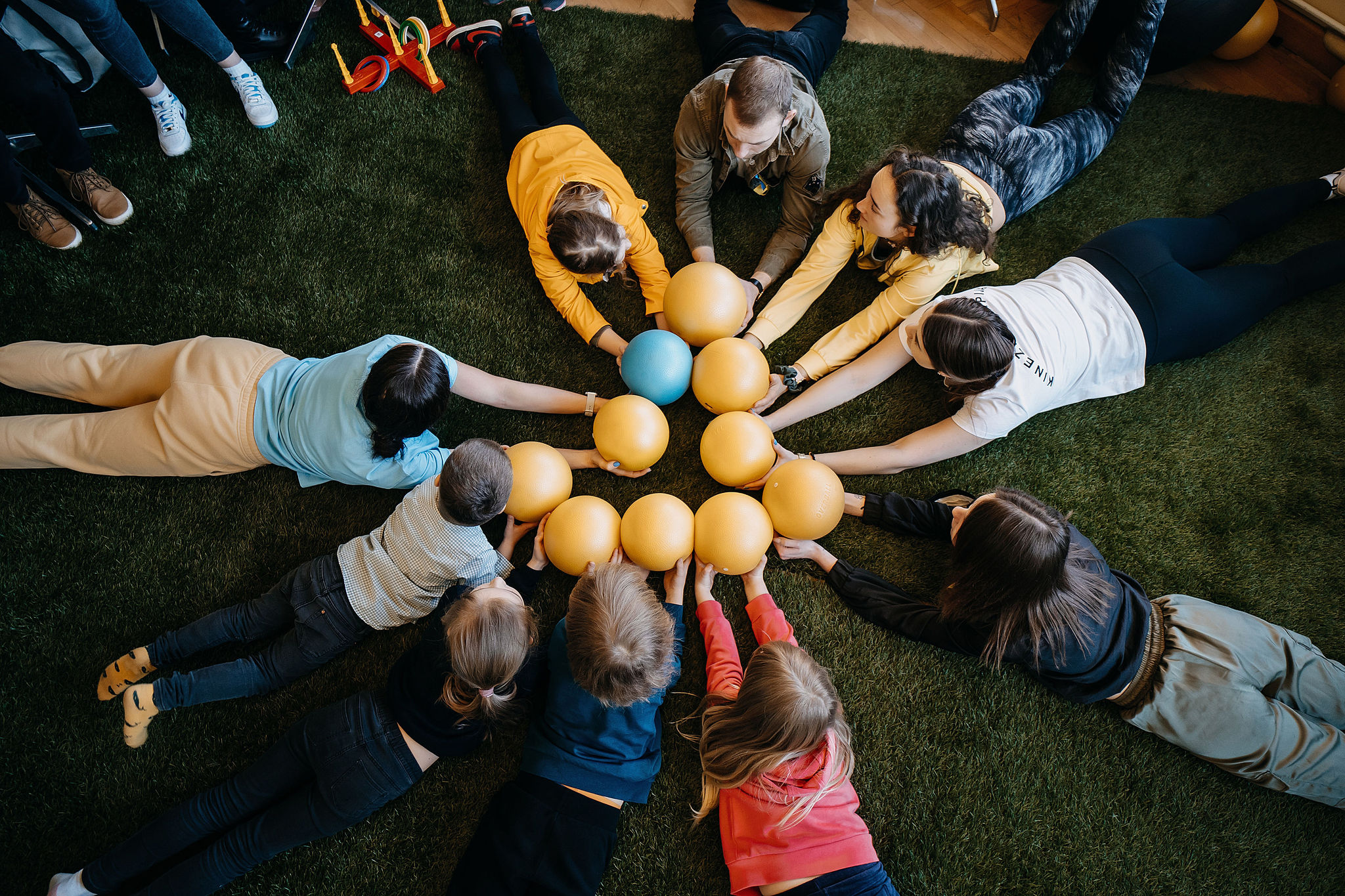
The report was prepared by Vaida Morkūnaitė
Photo author Martynas Plepys


